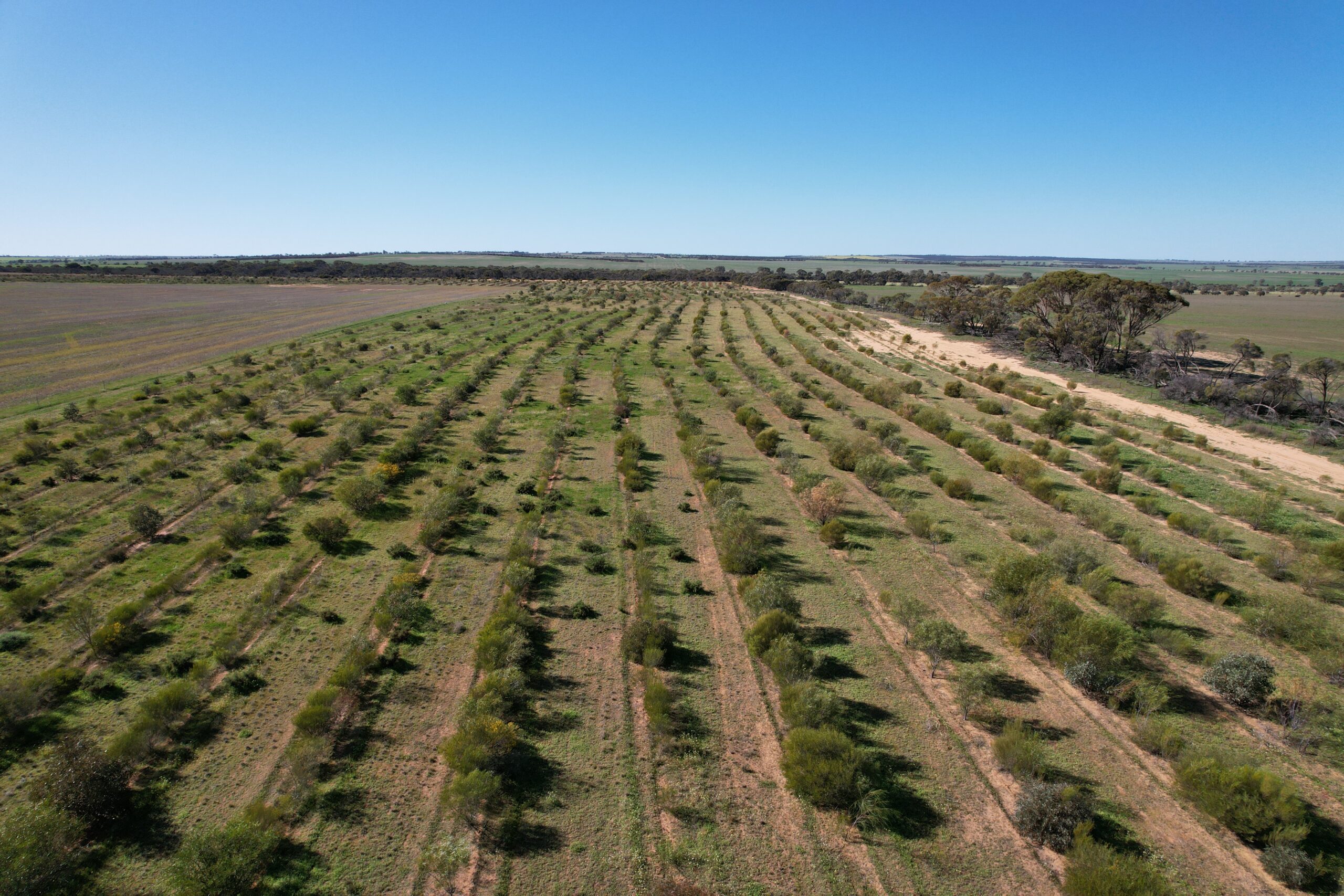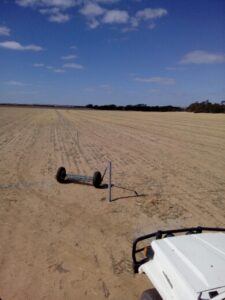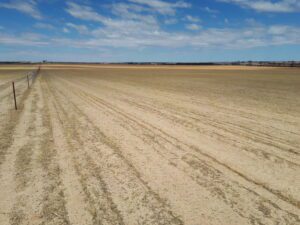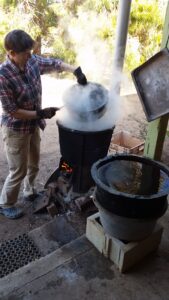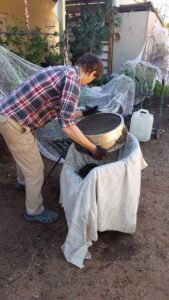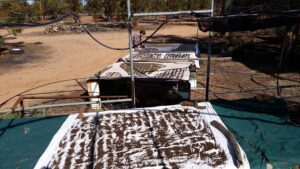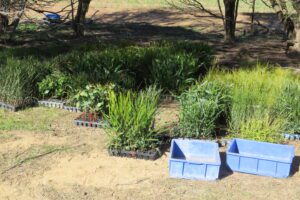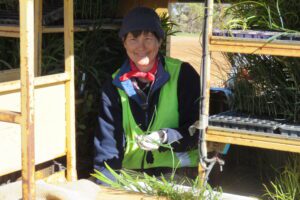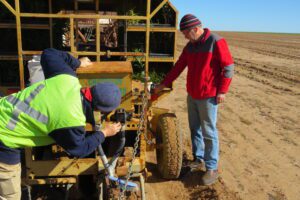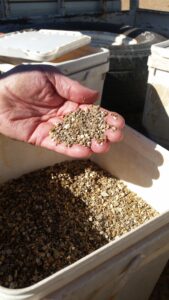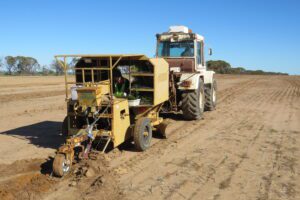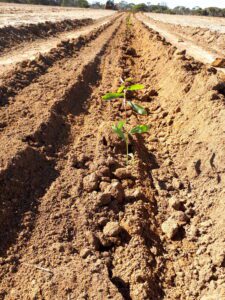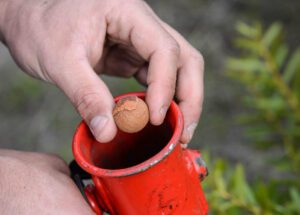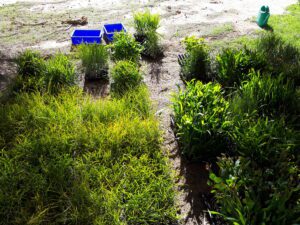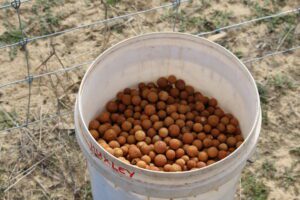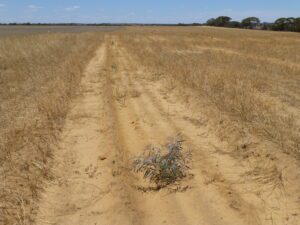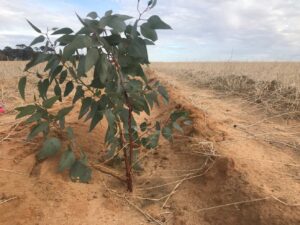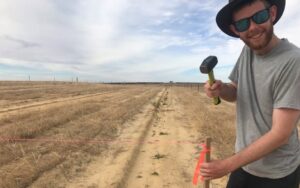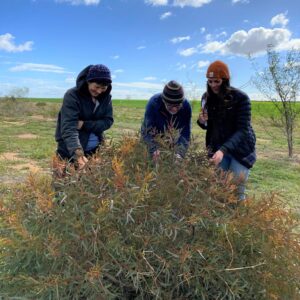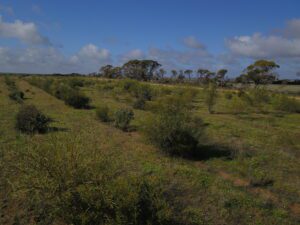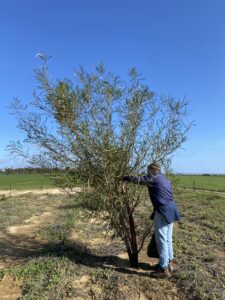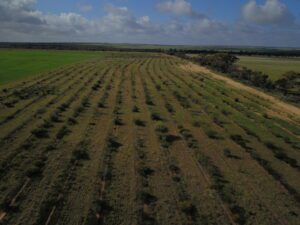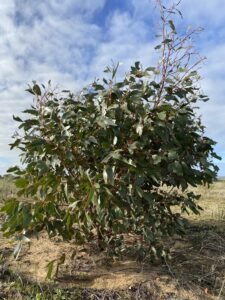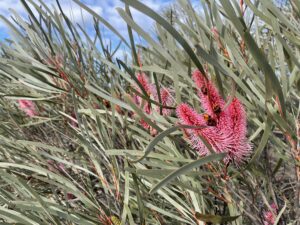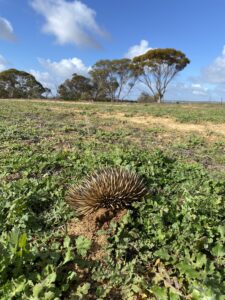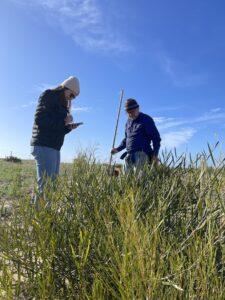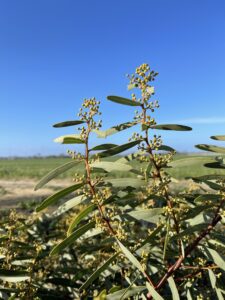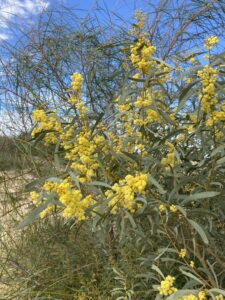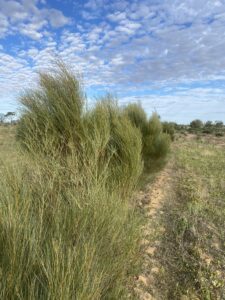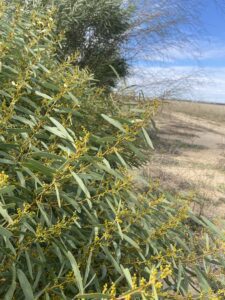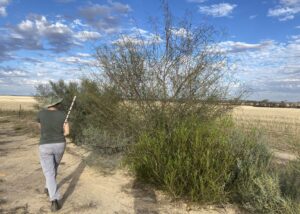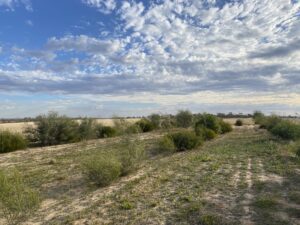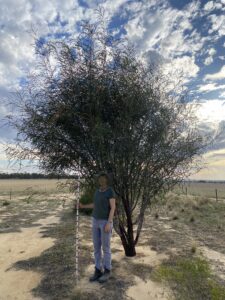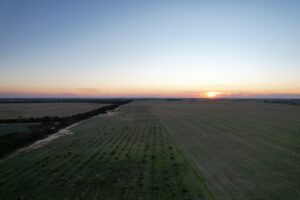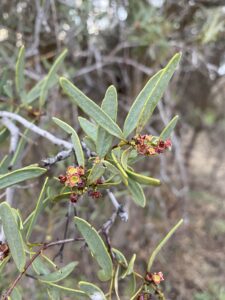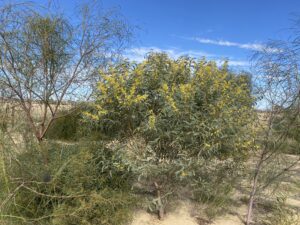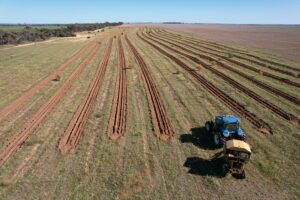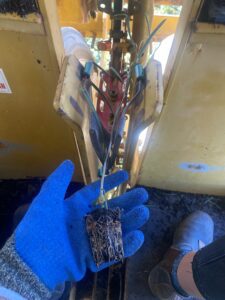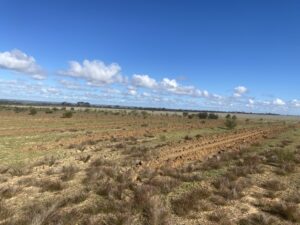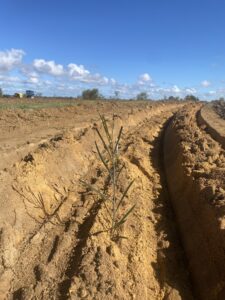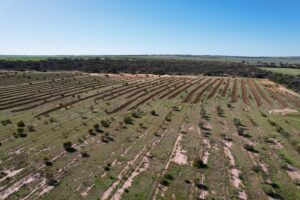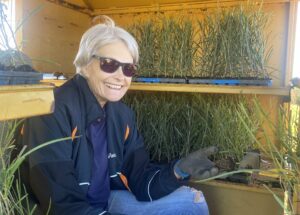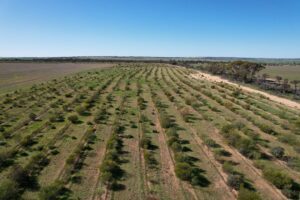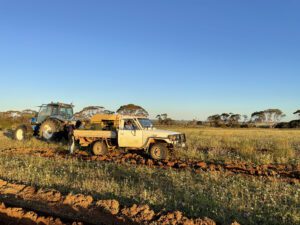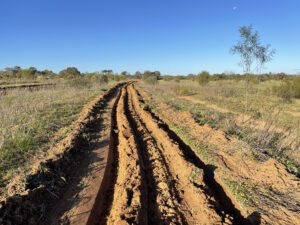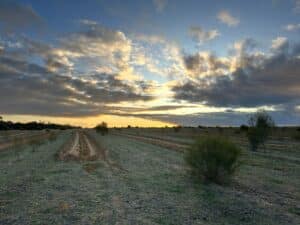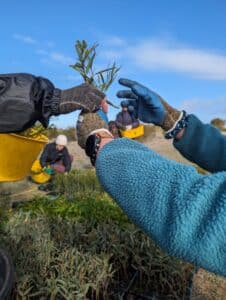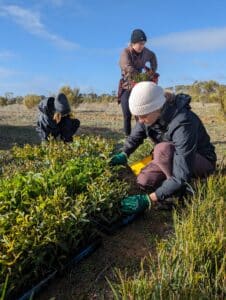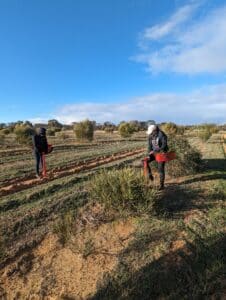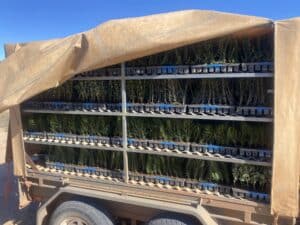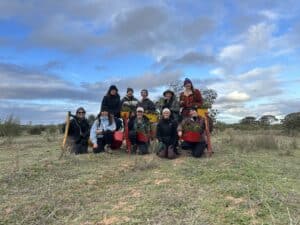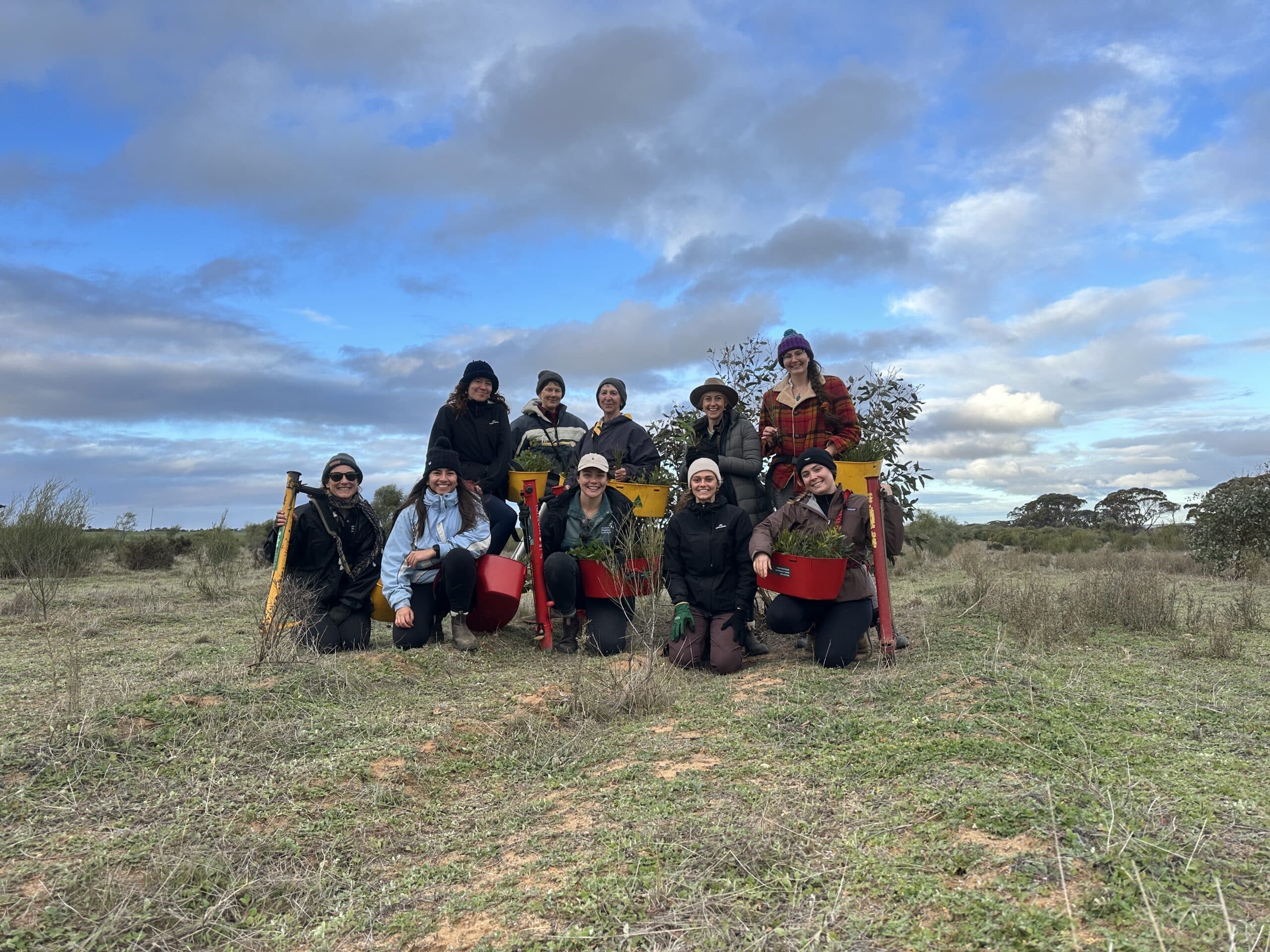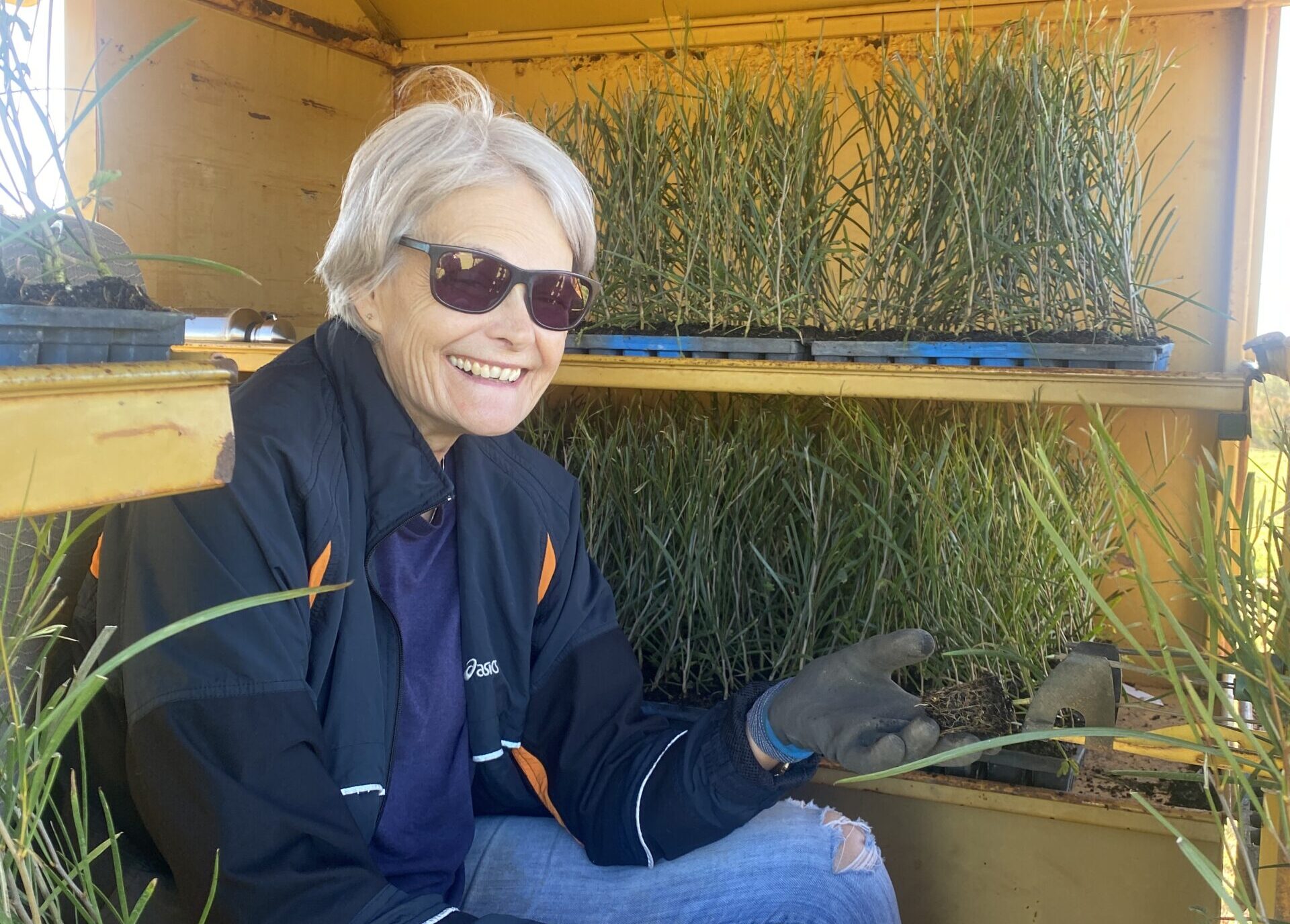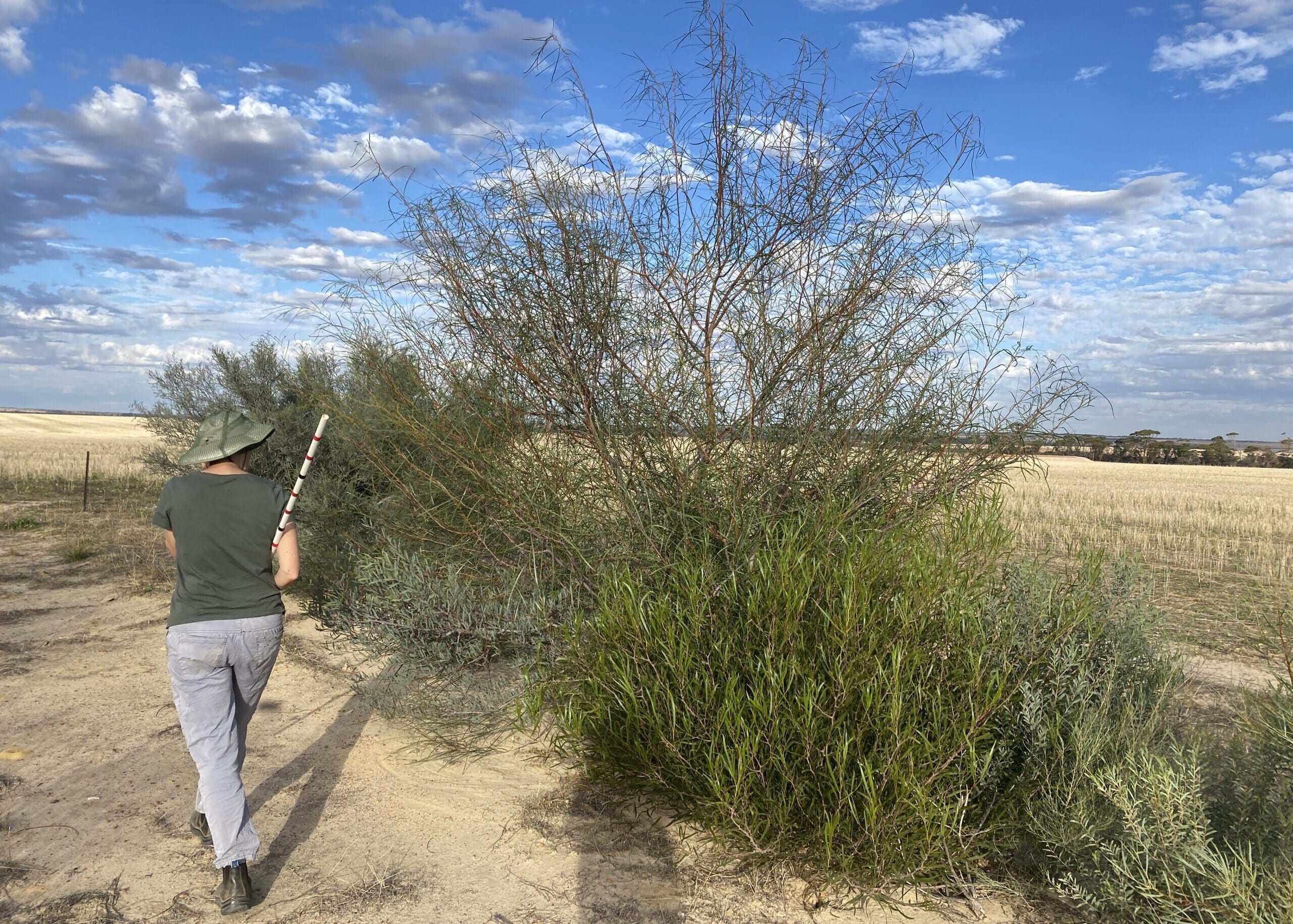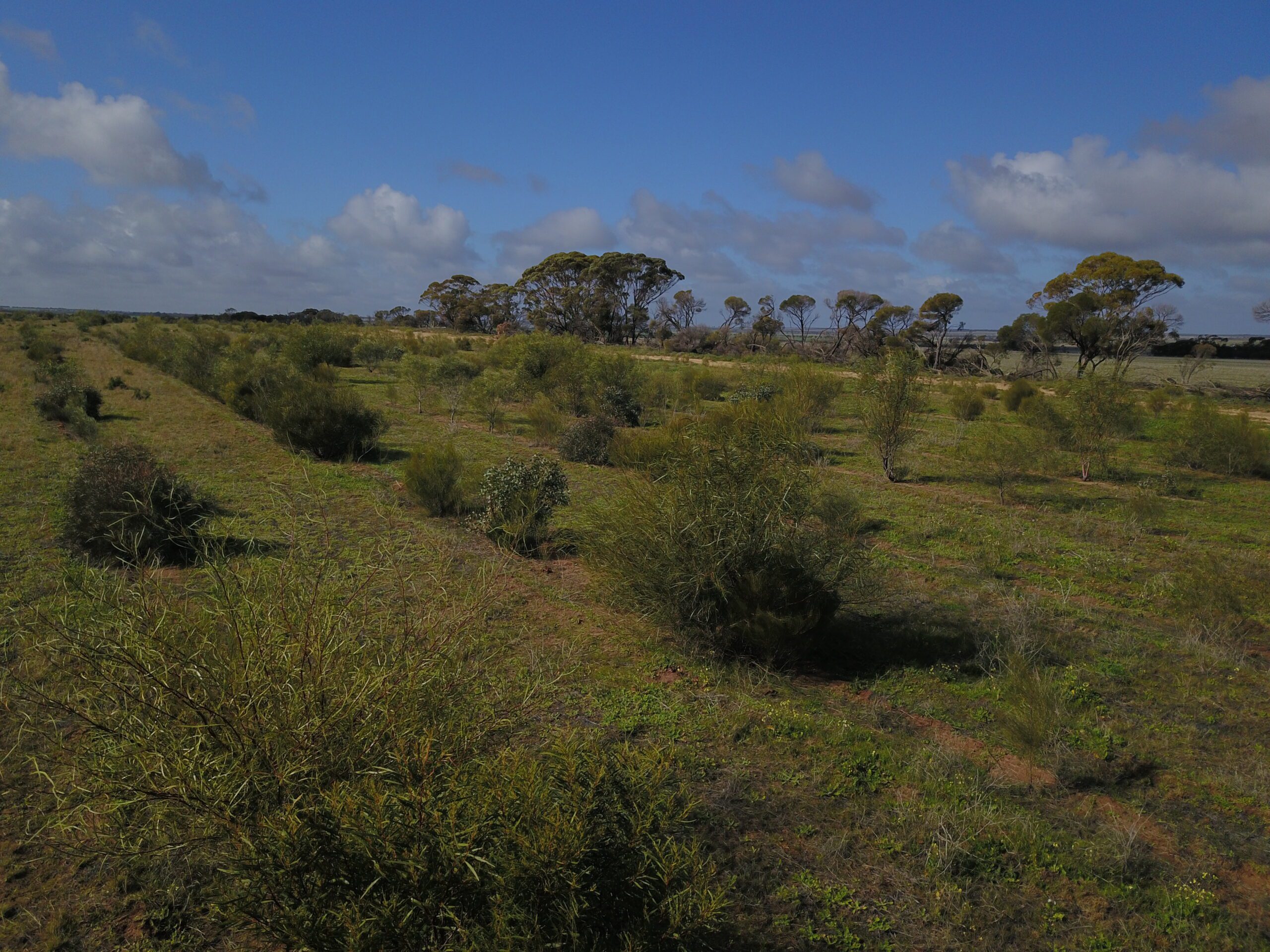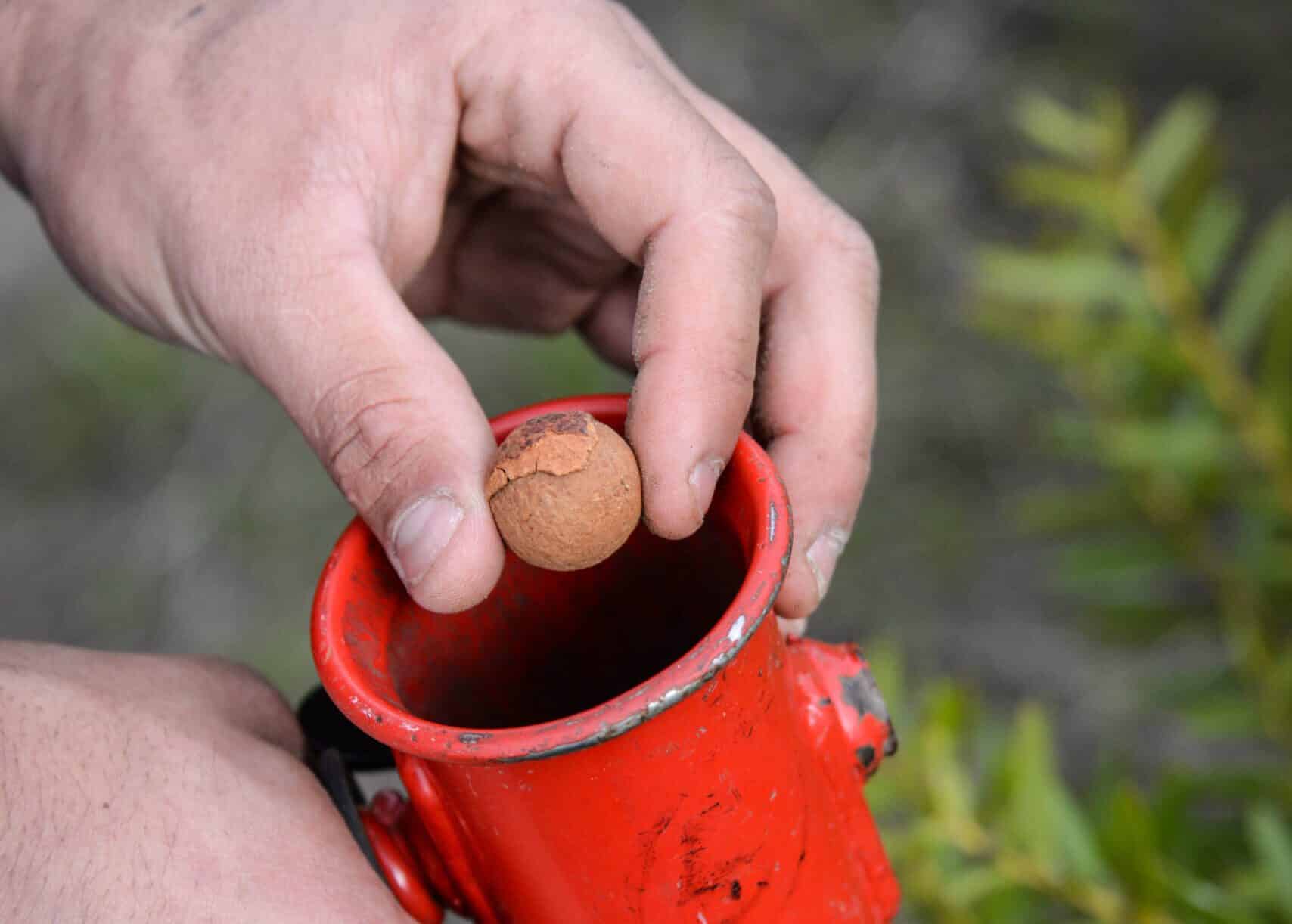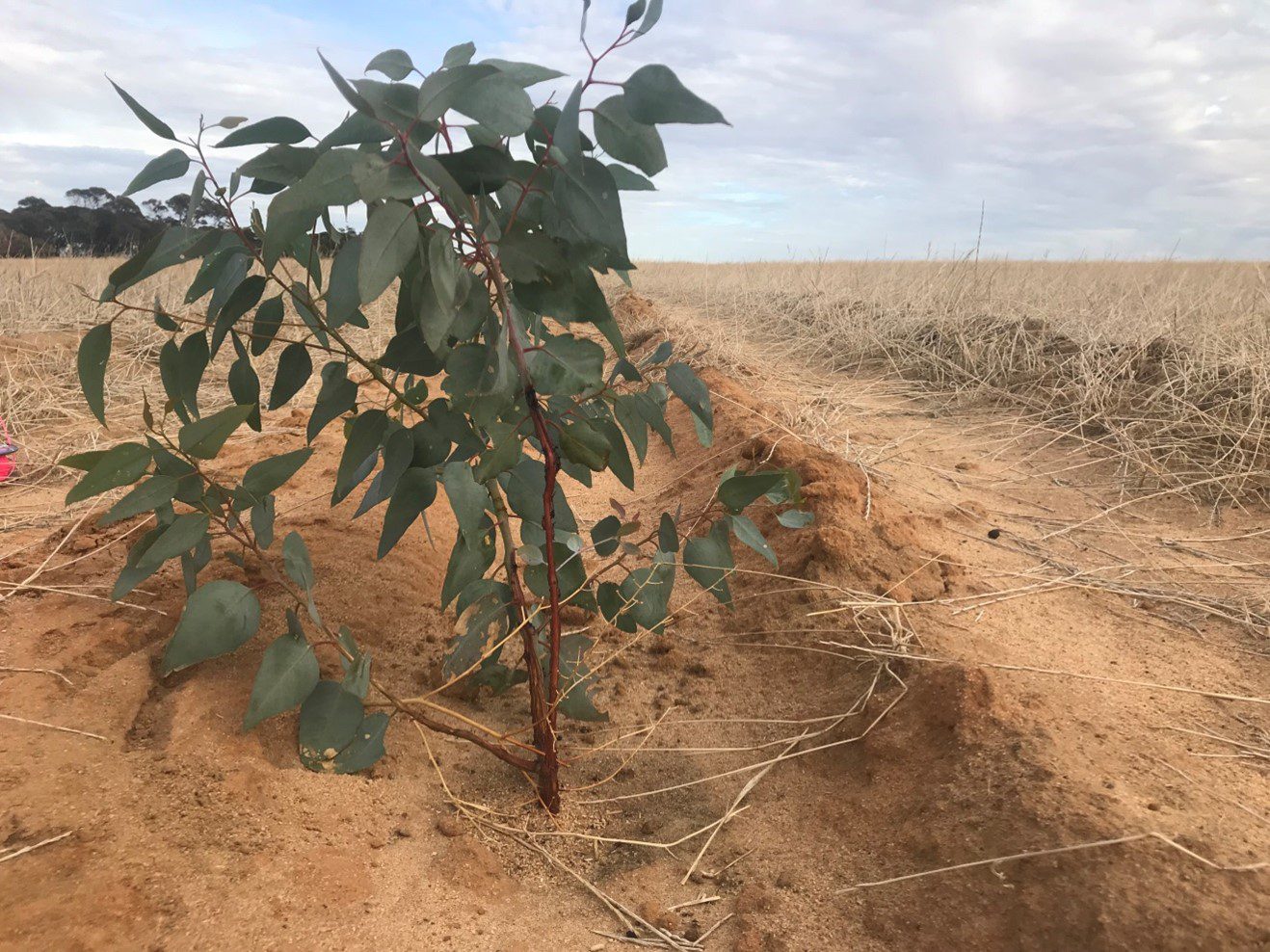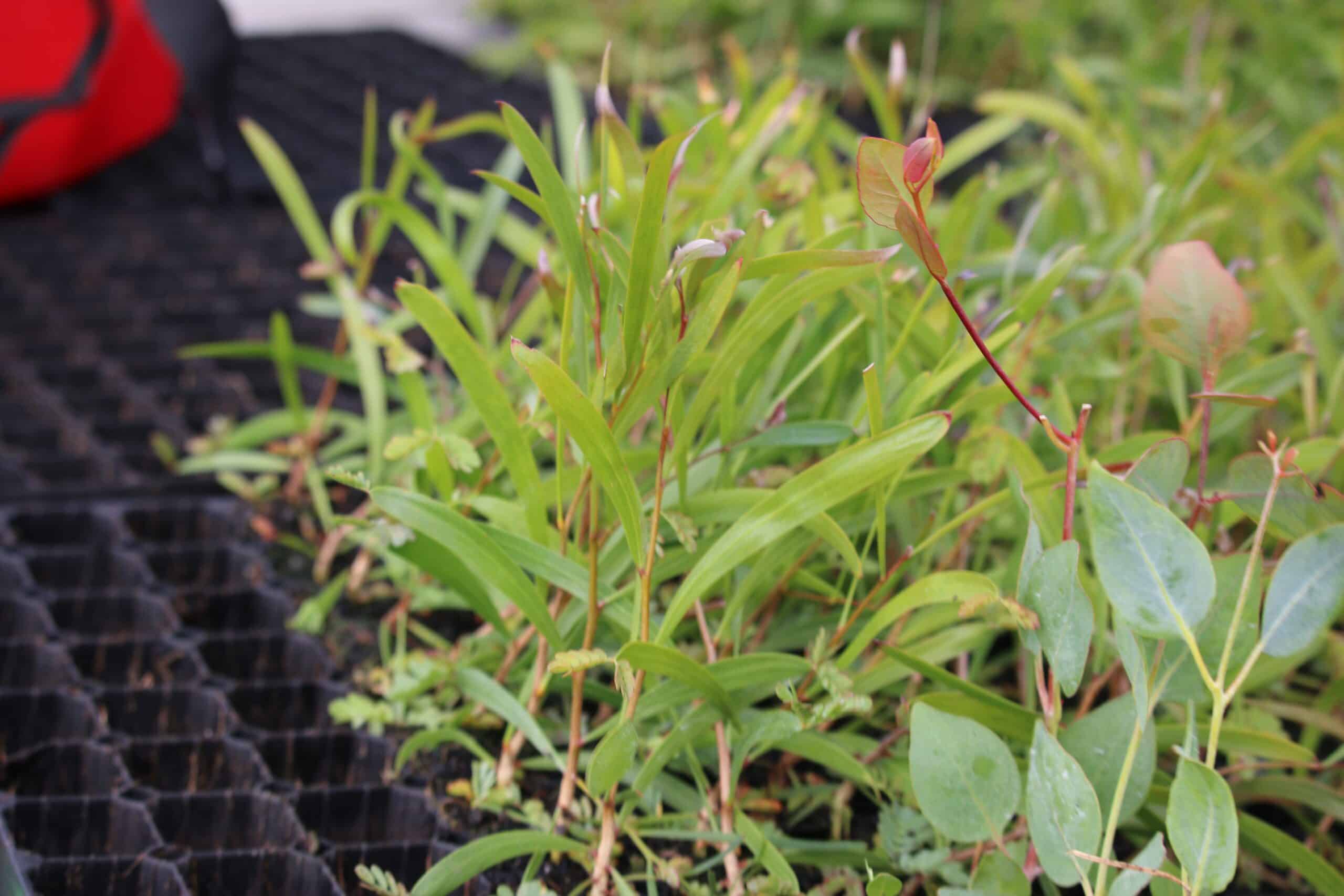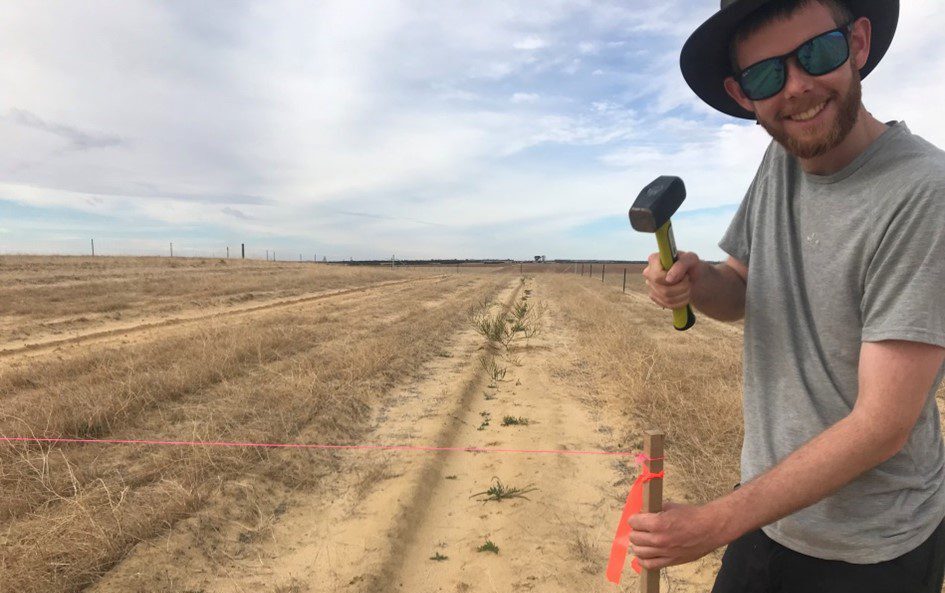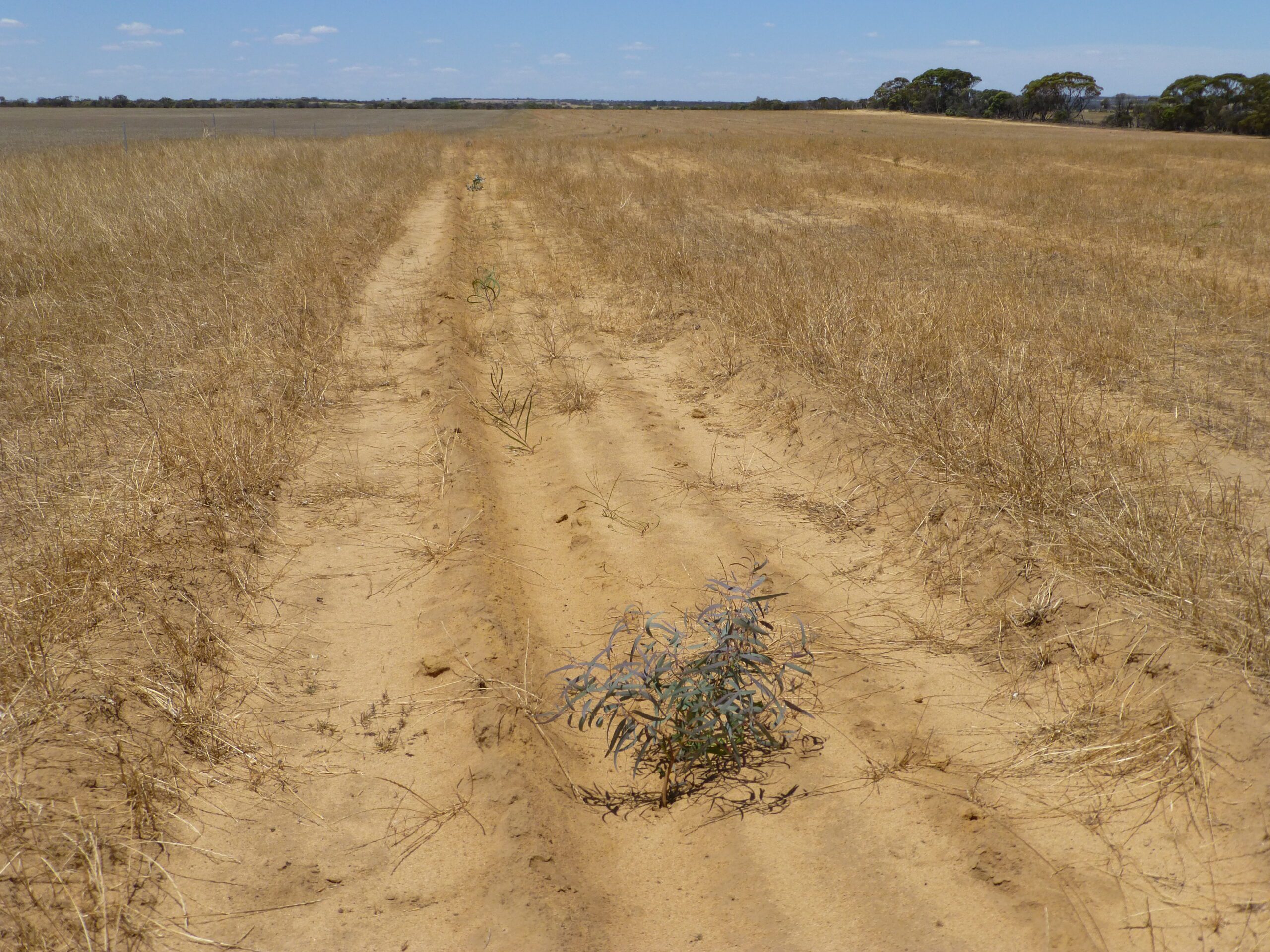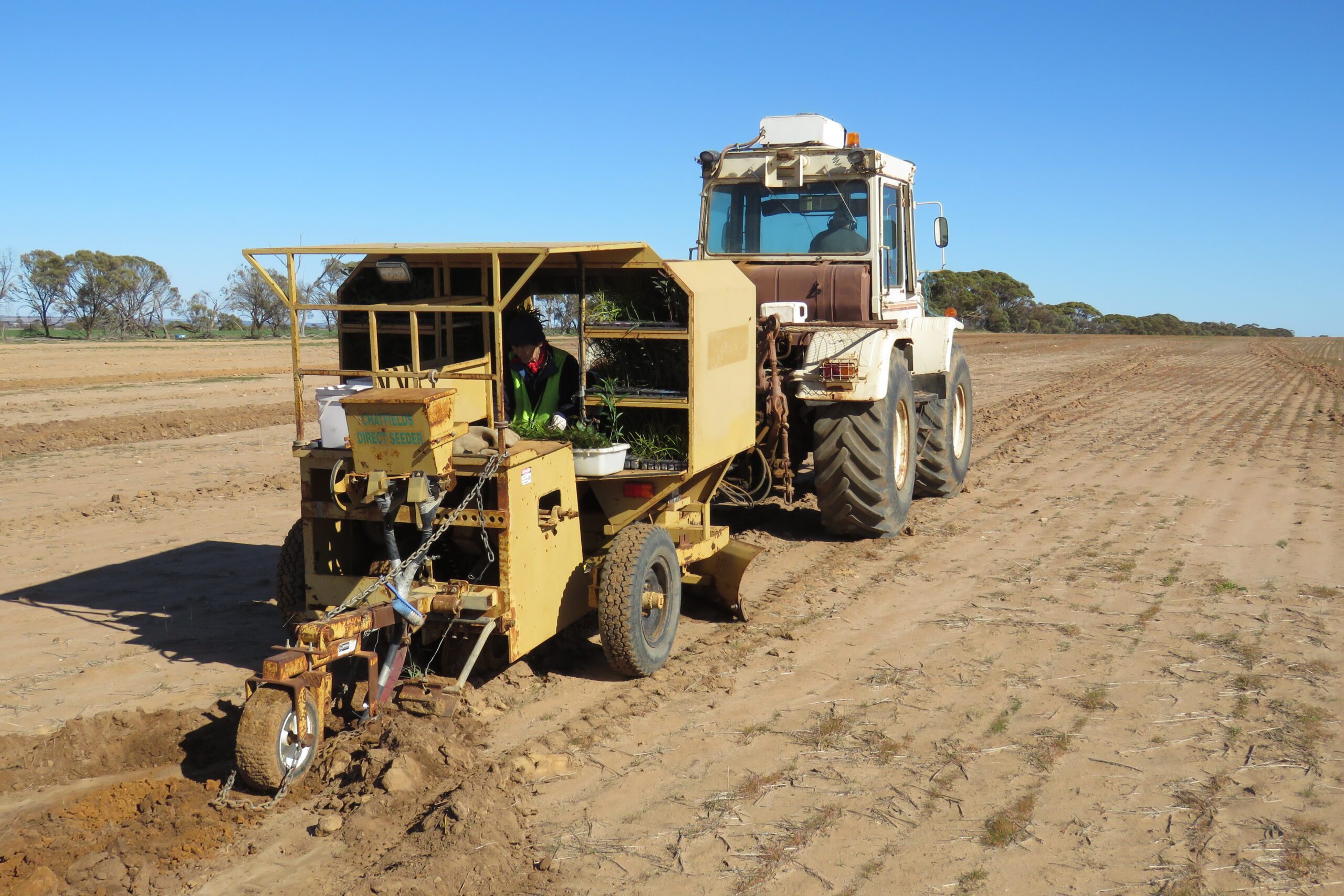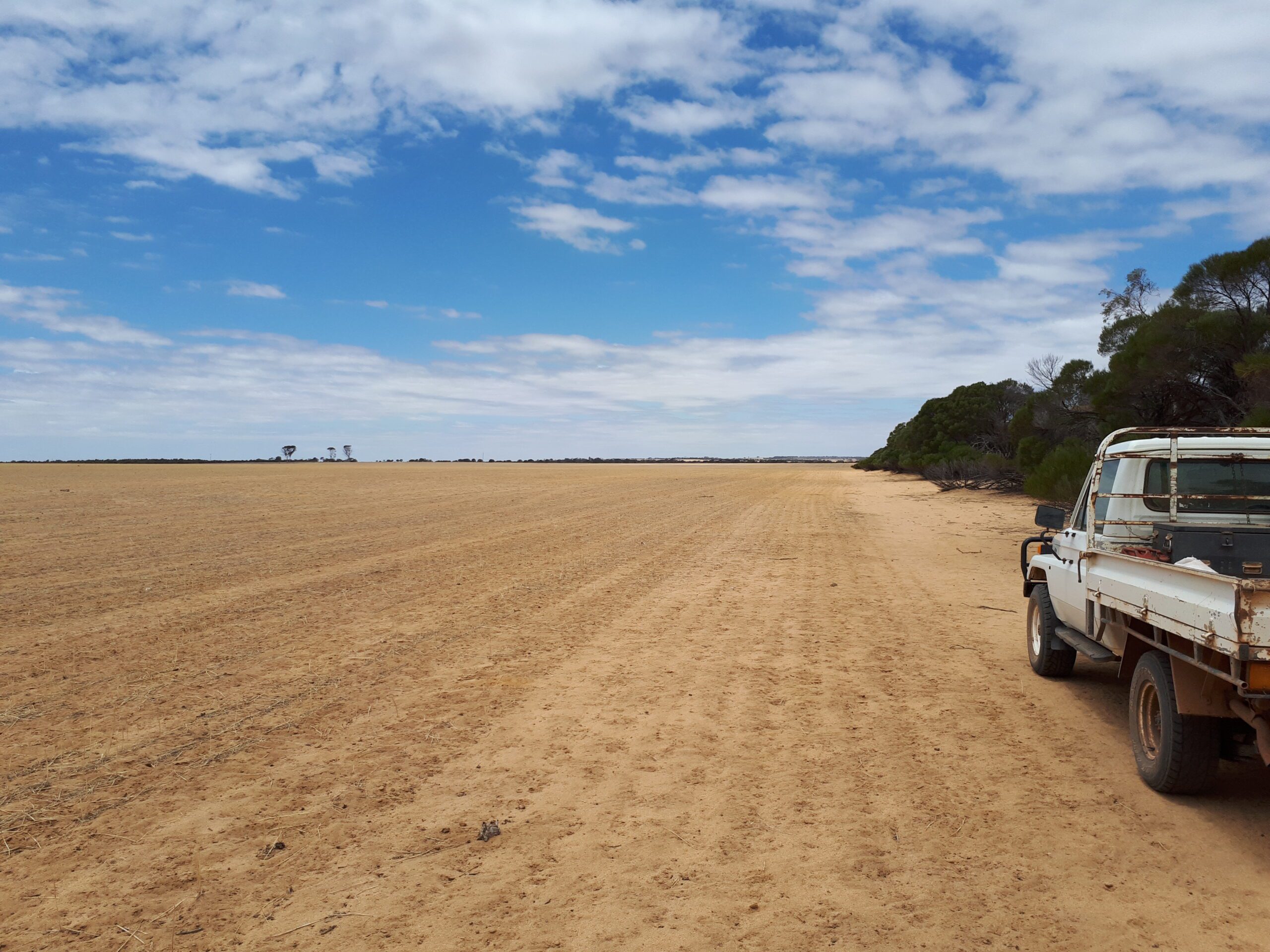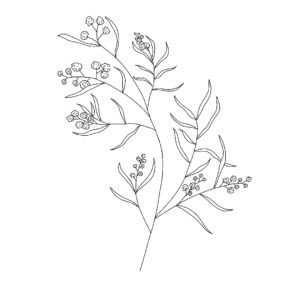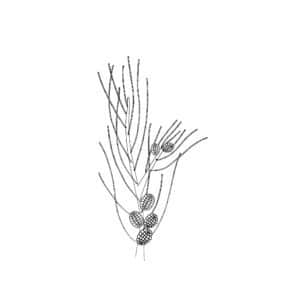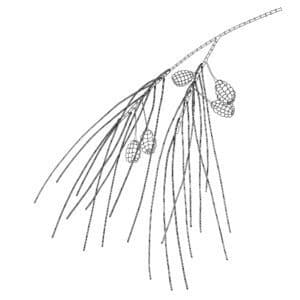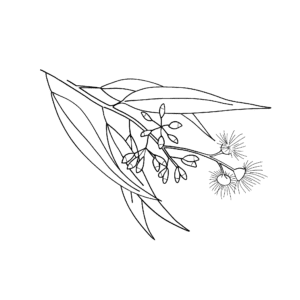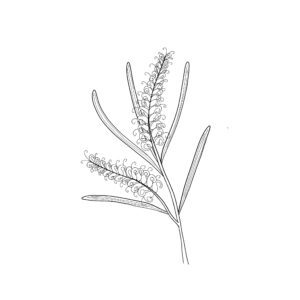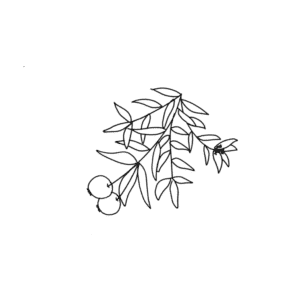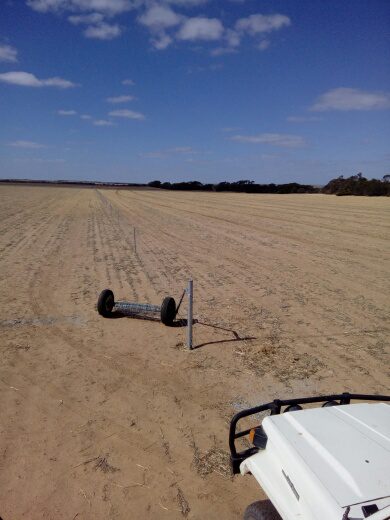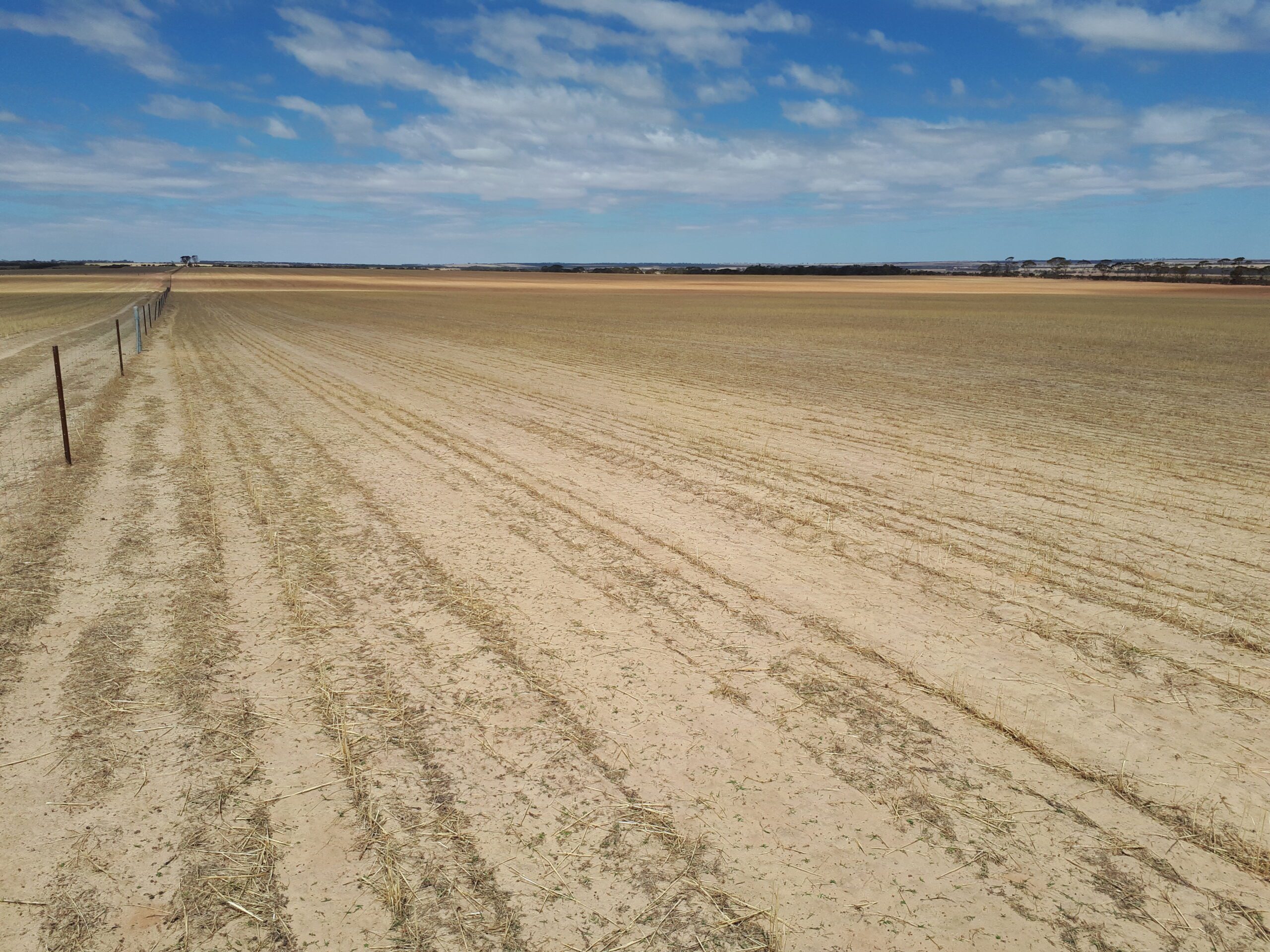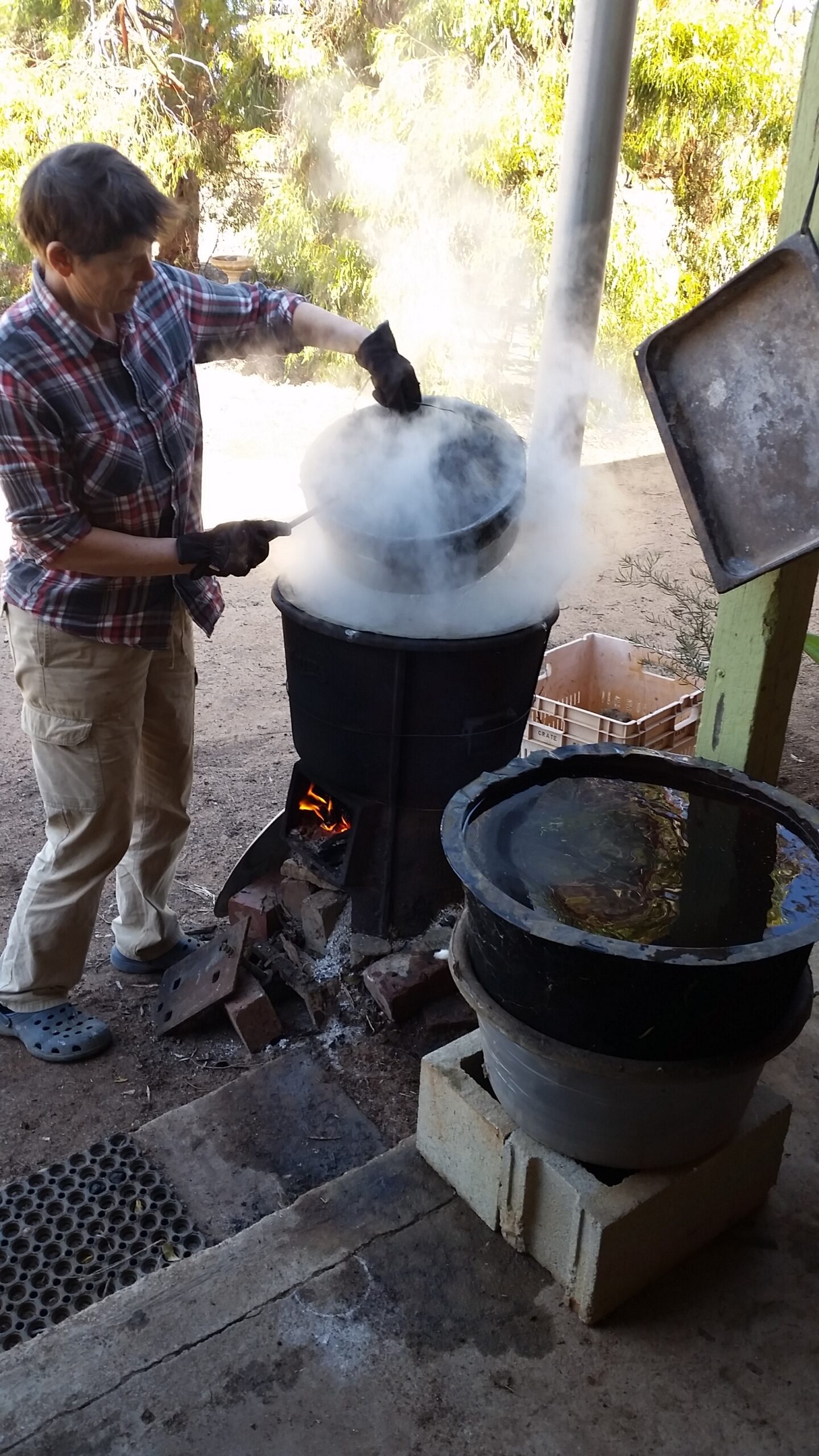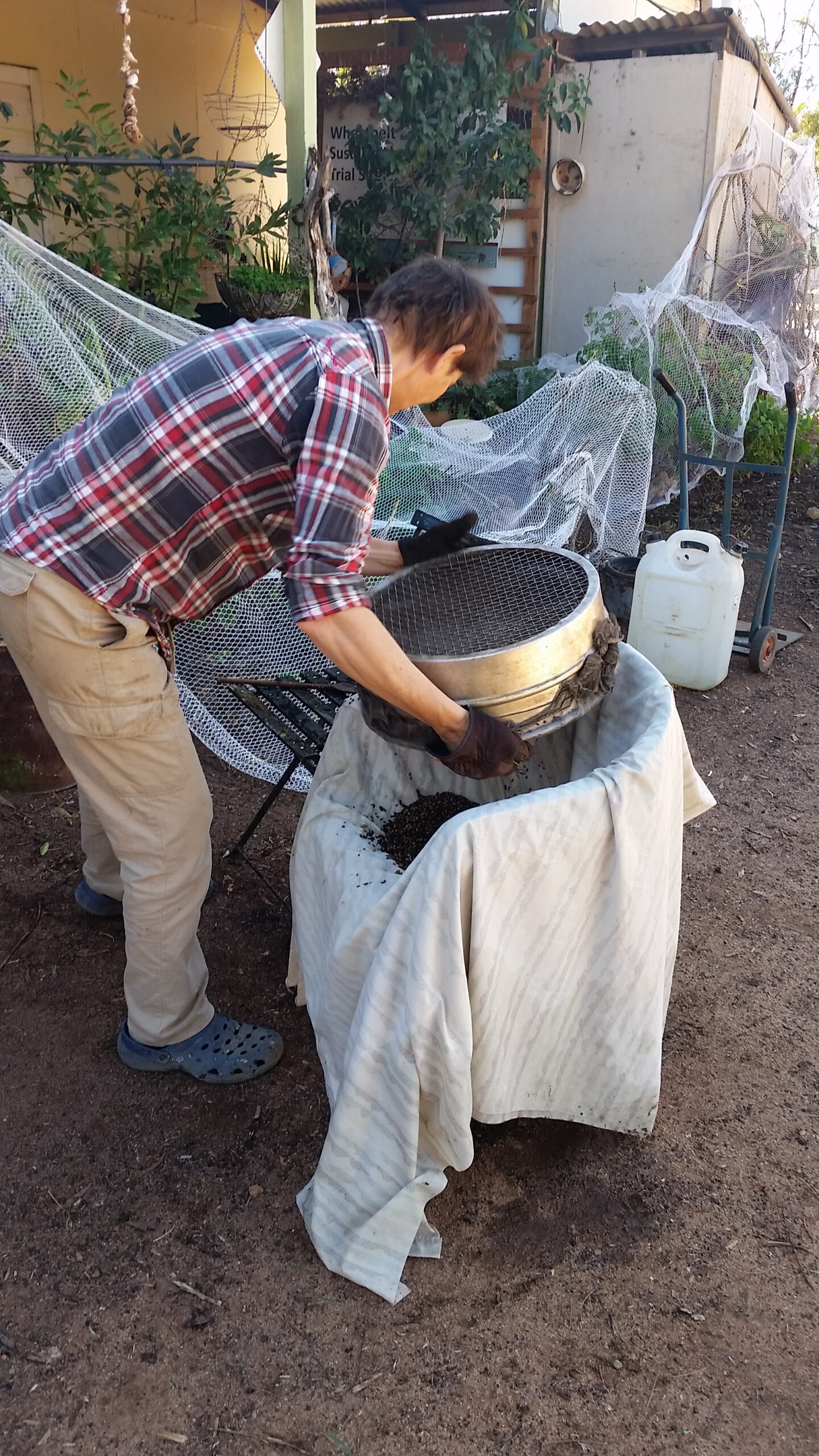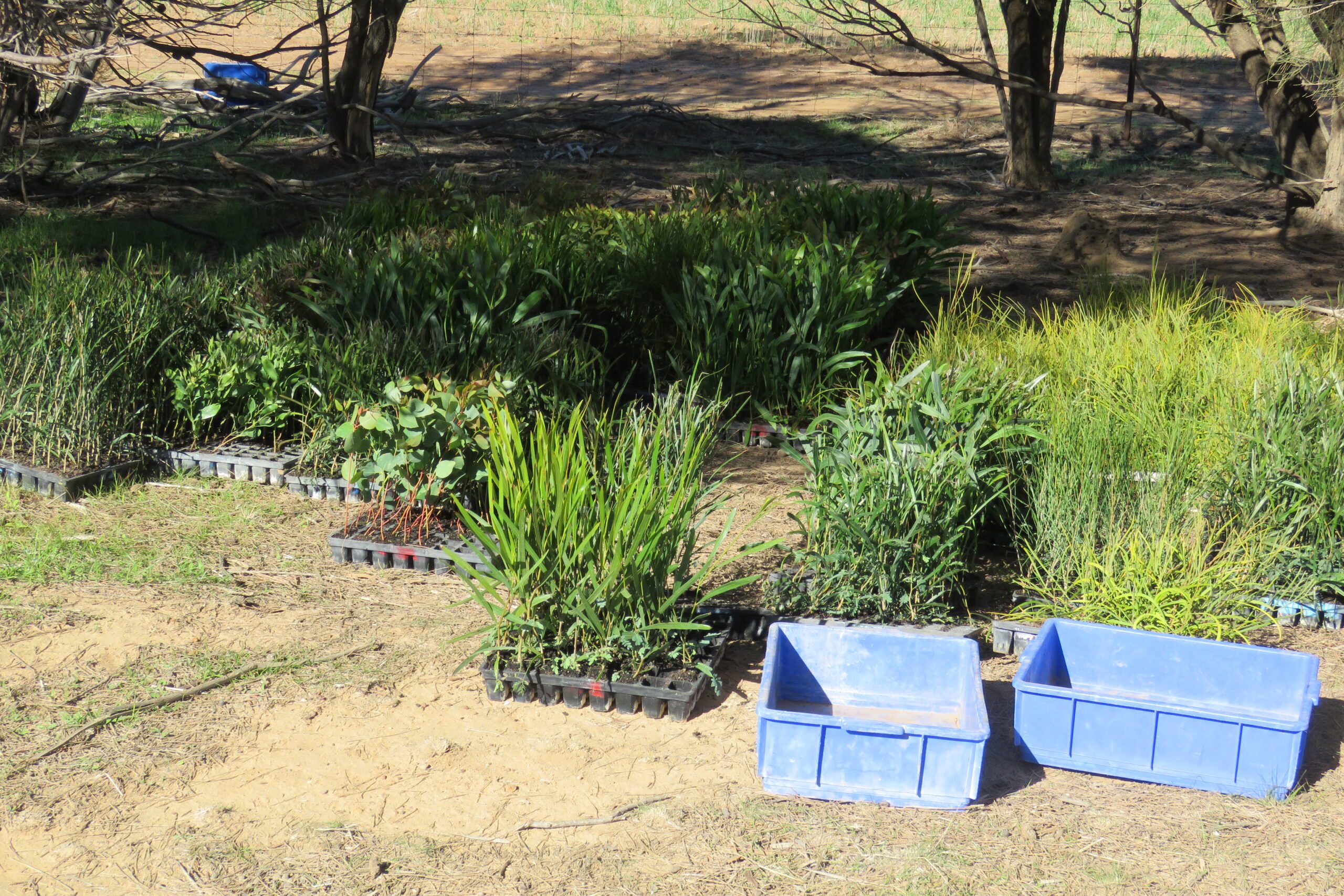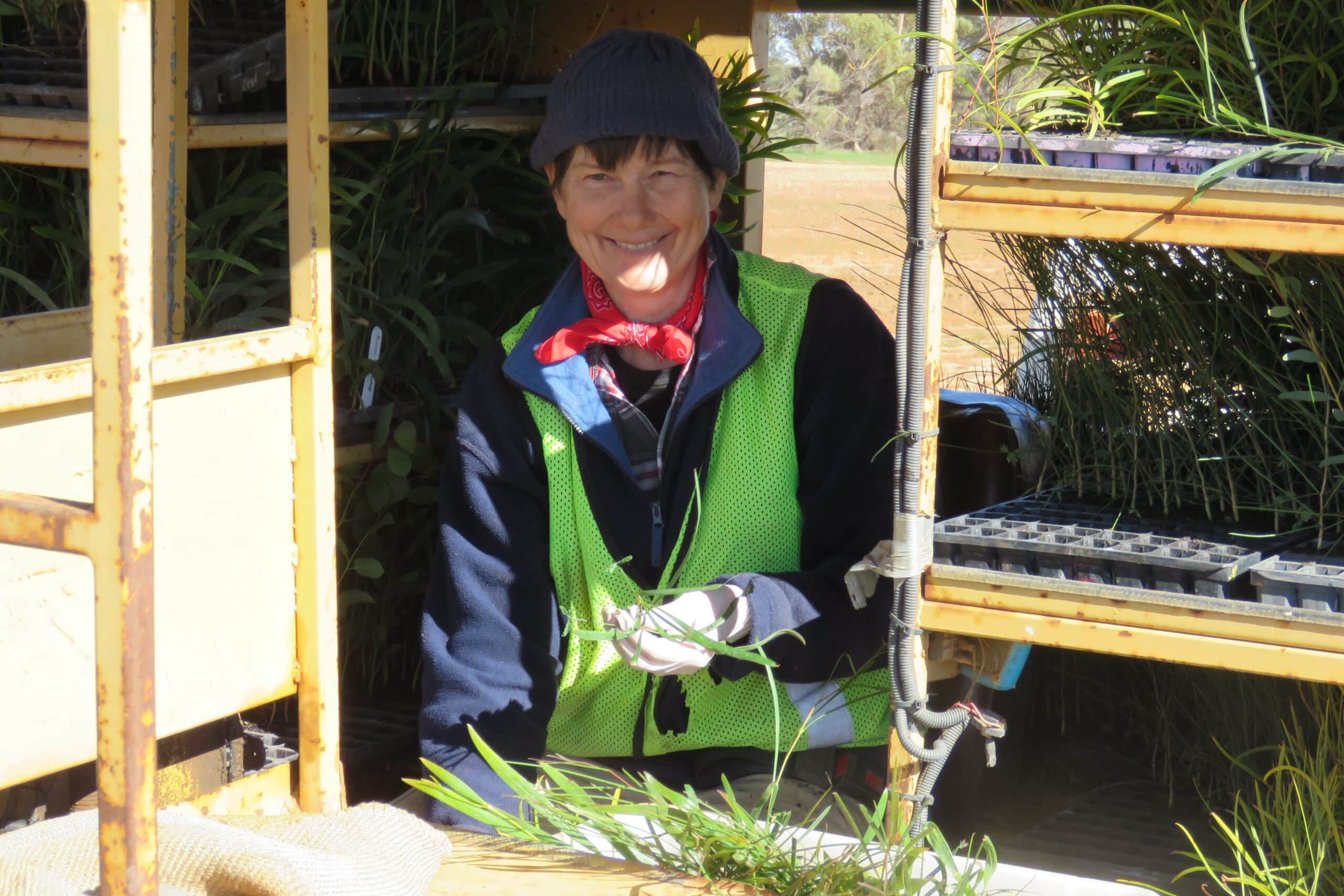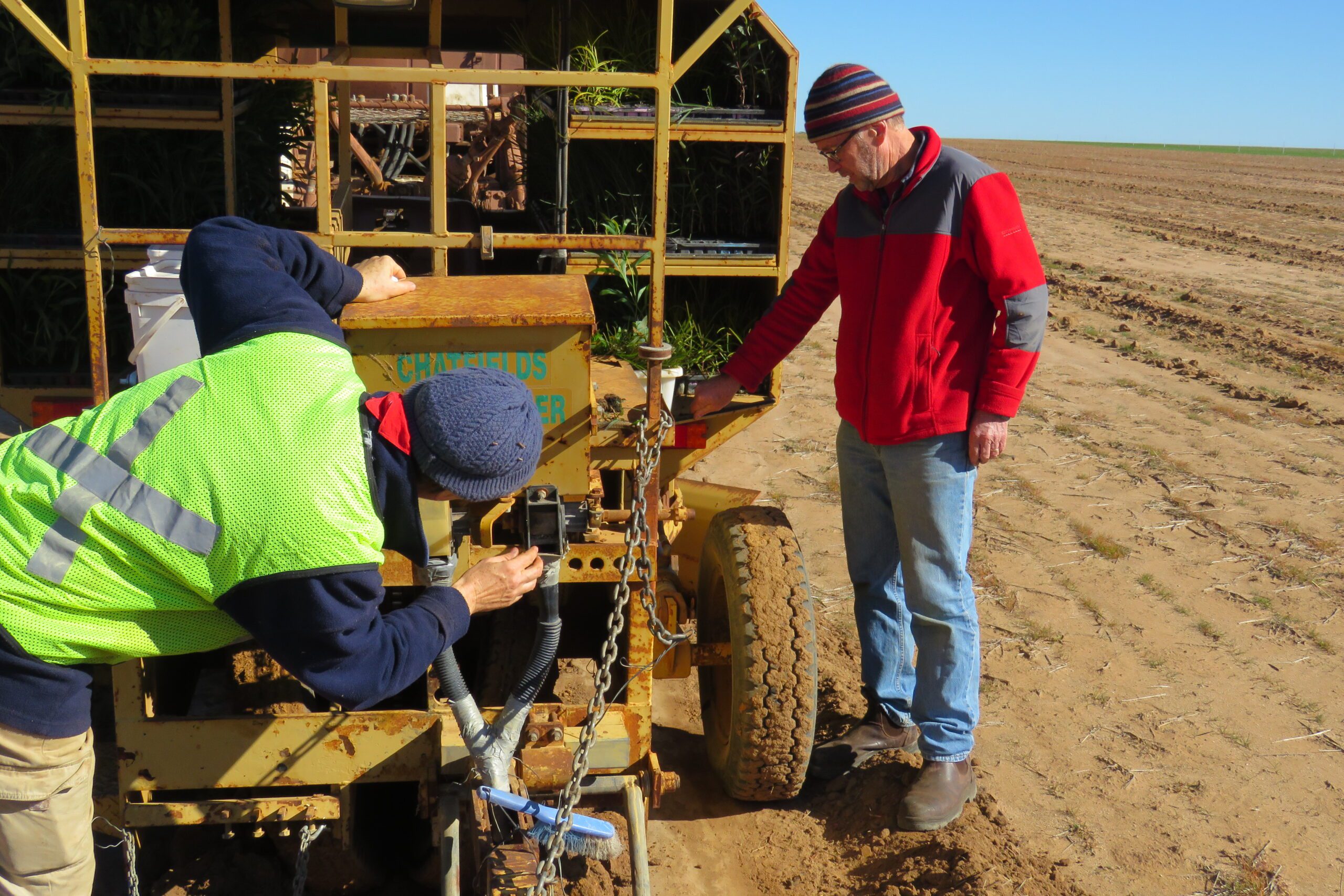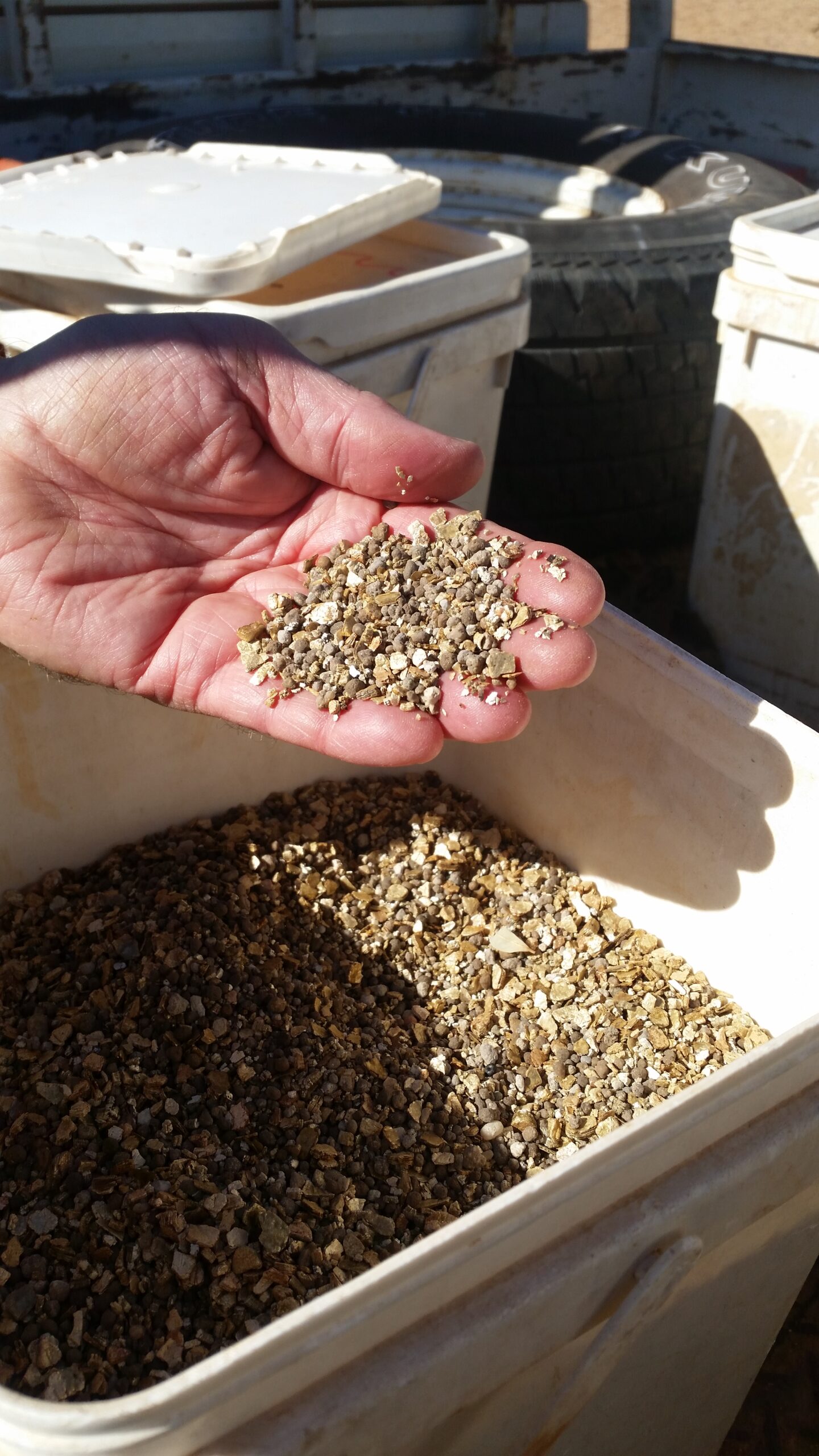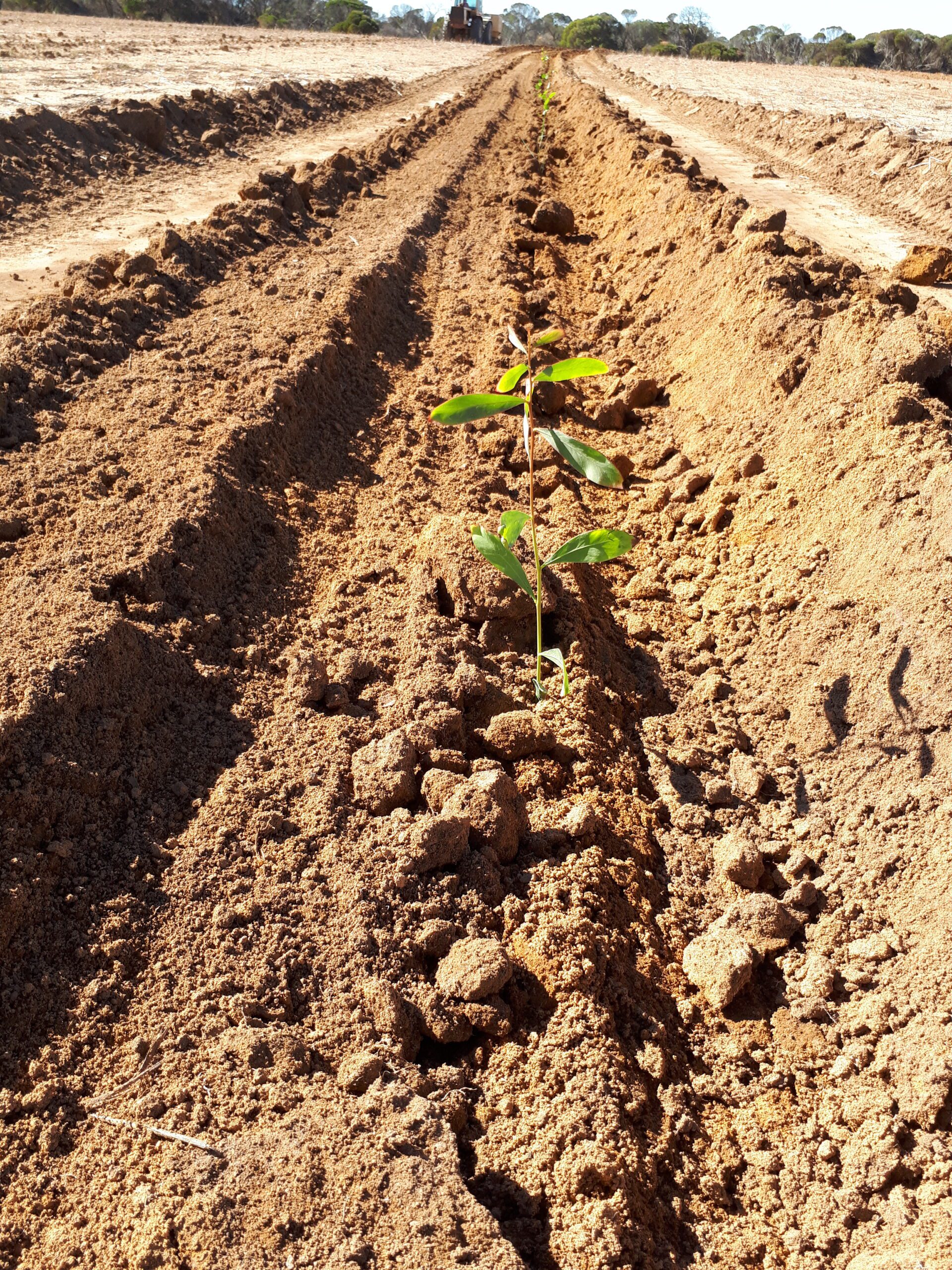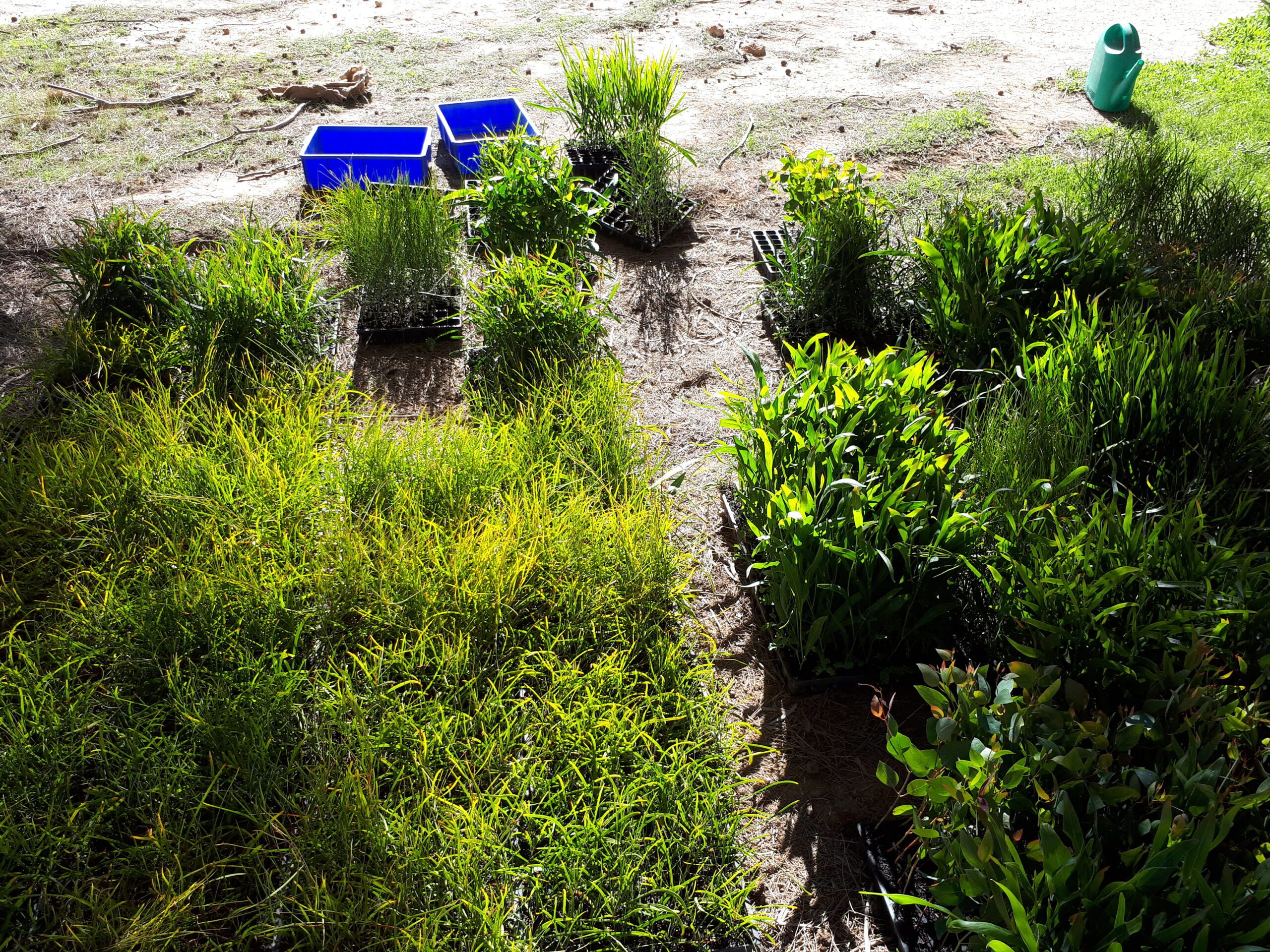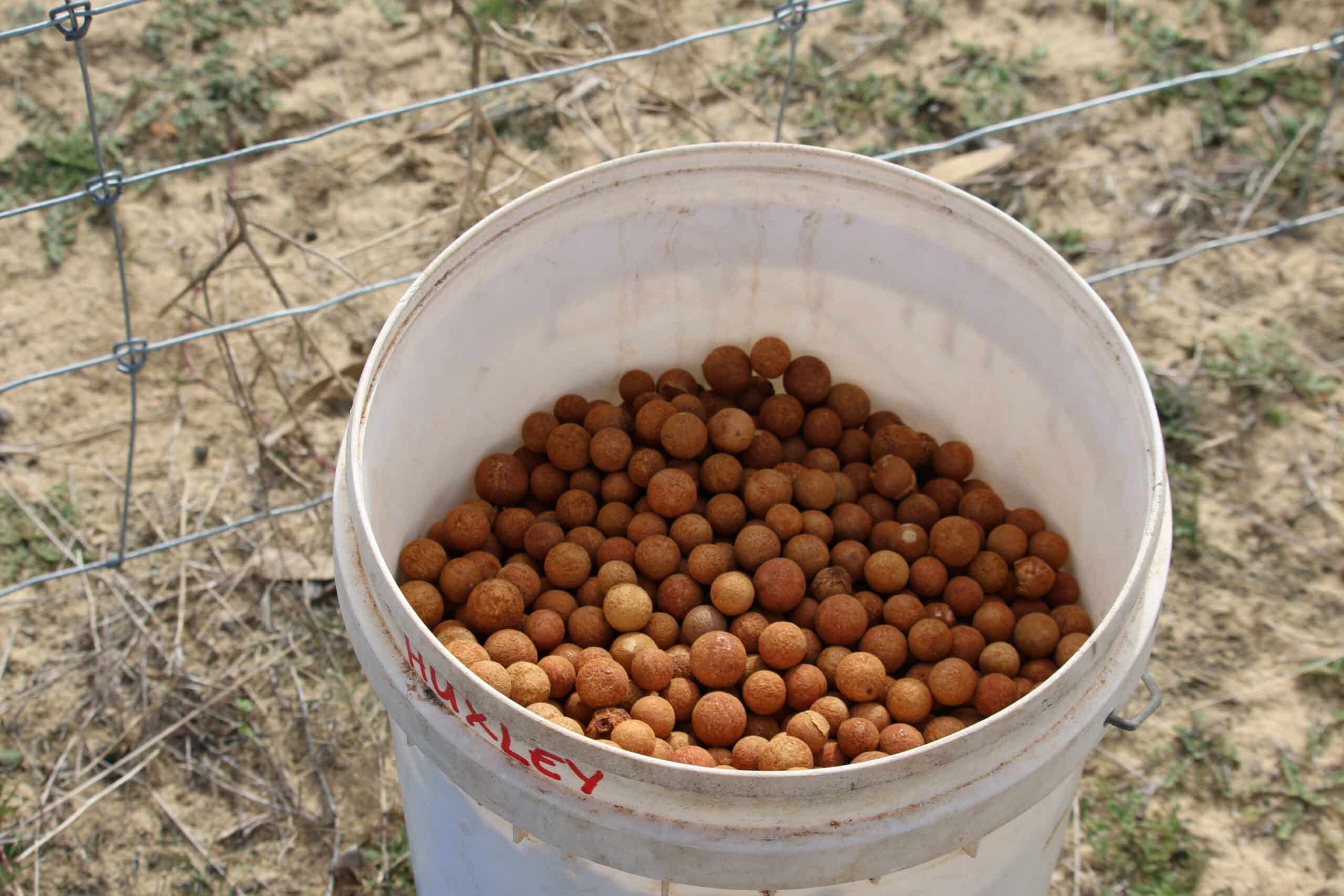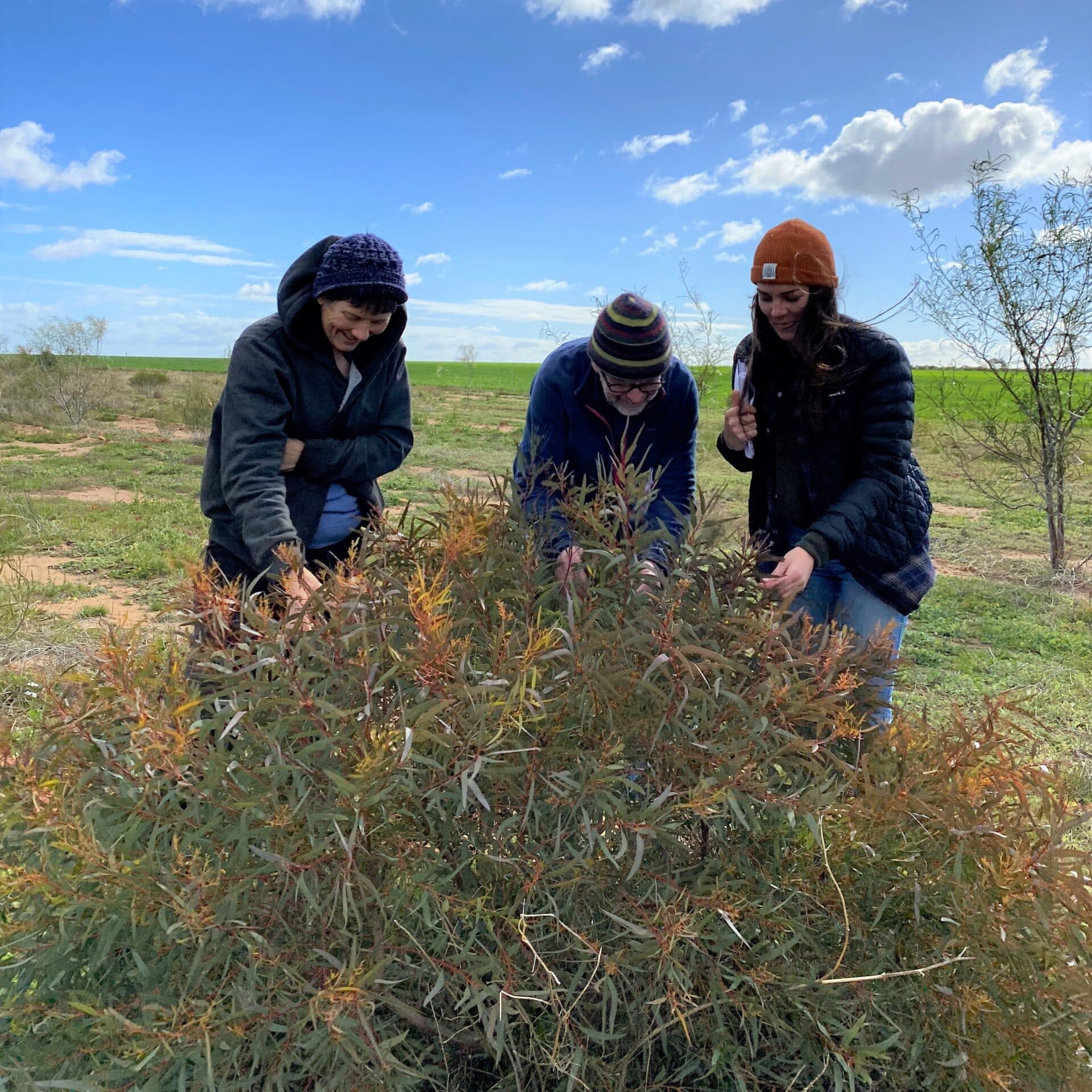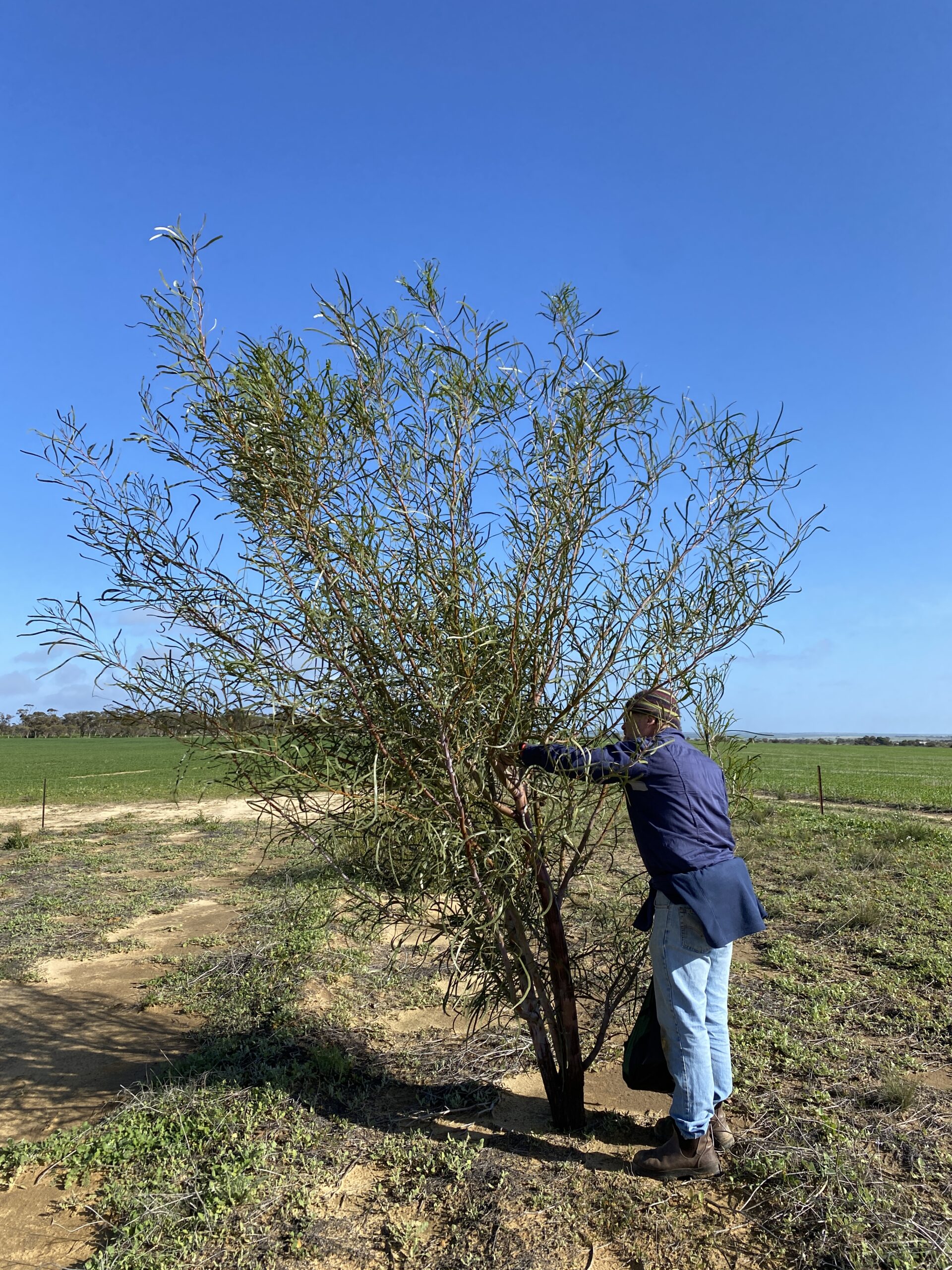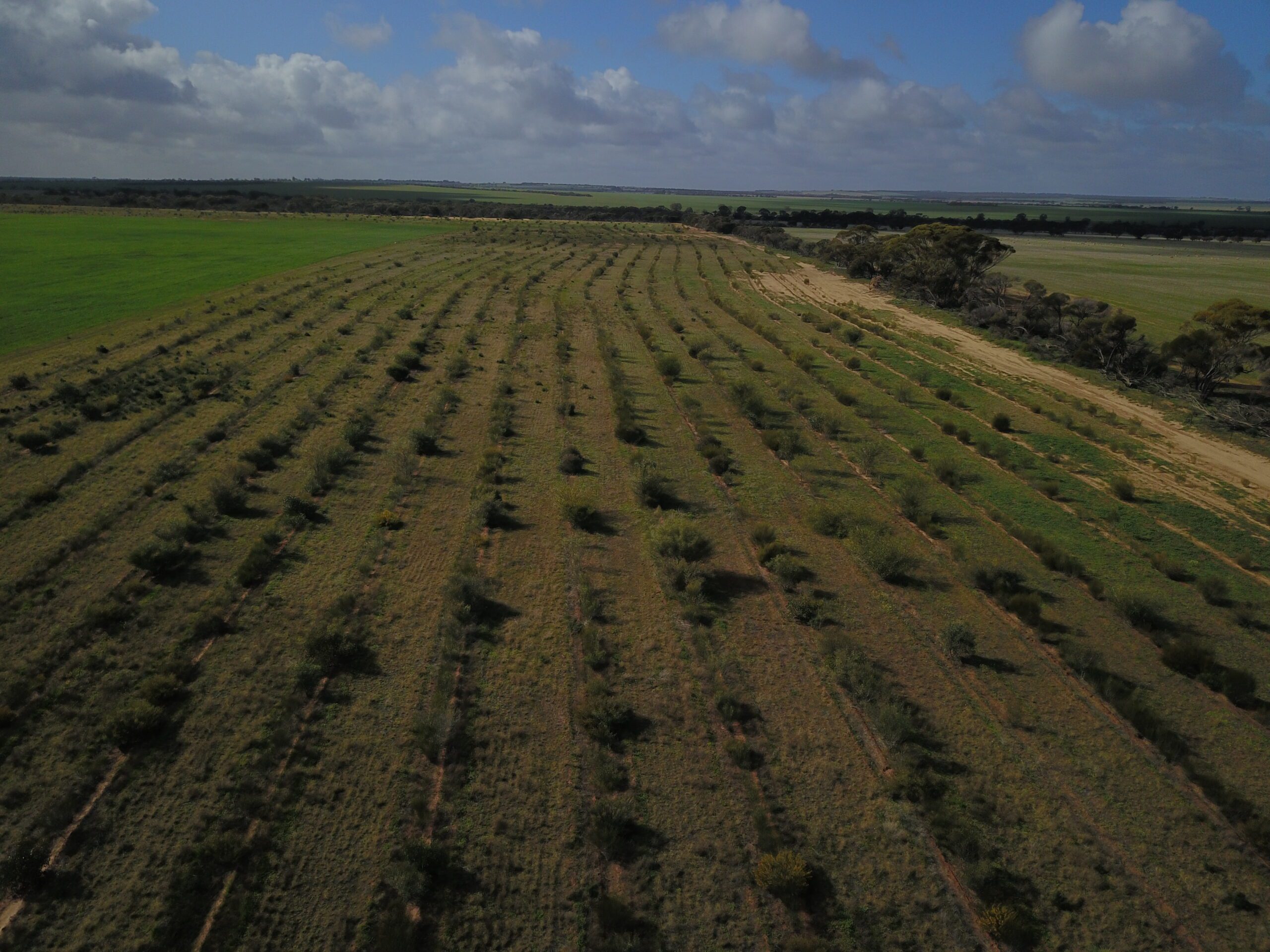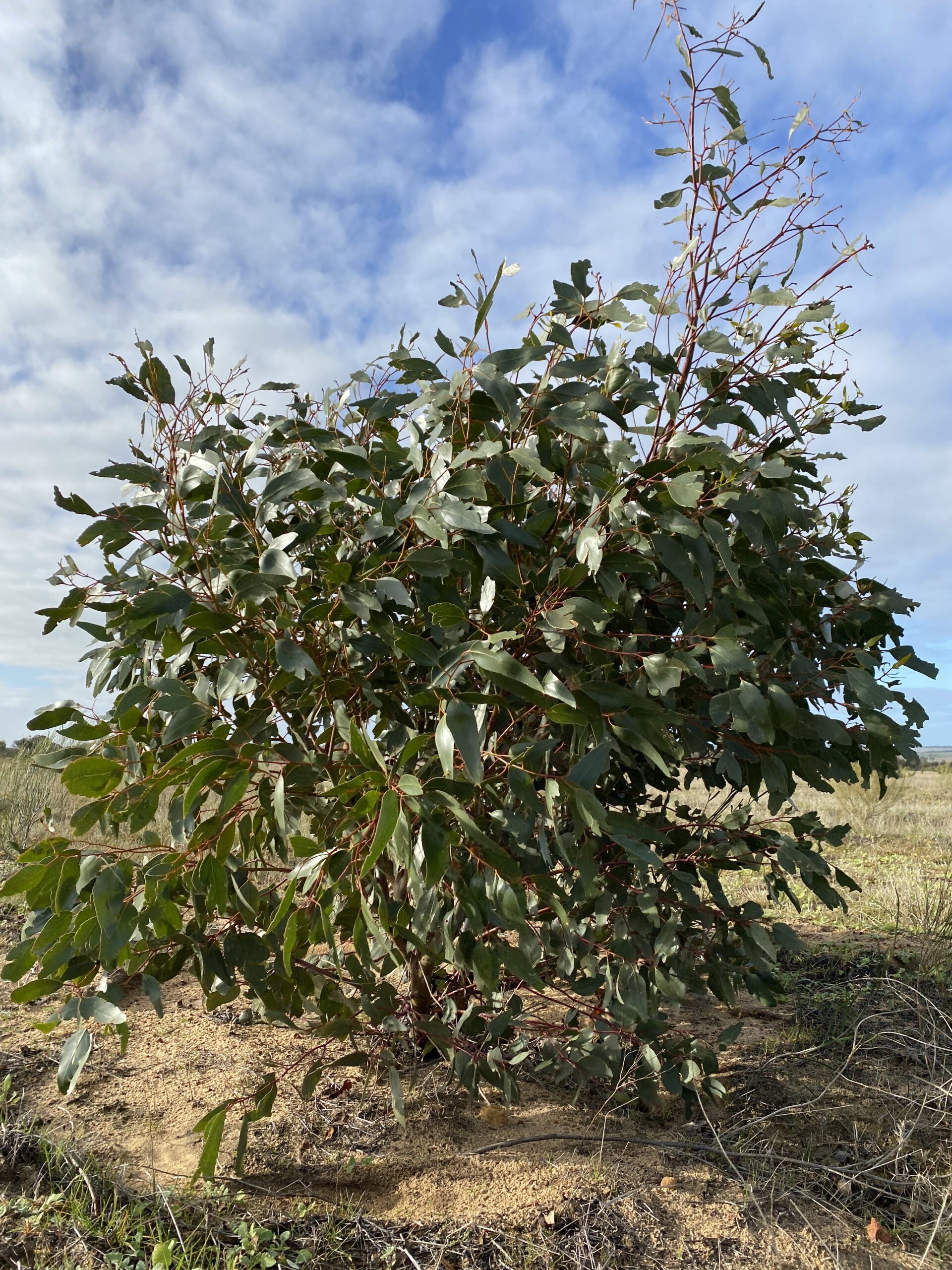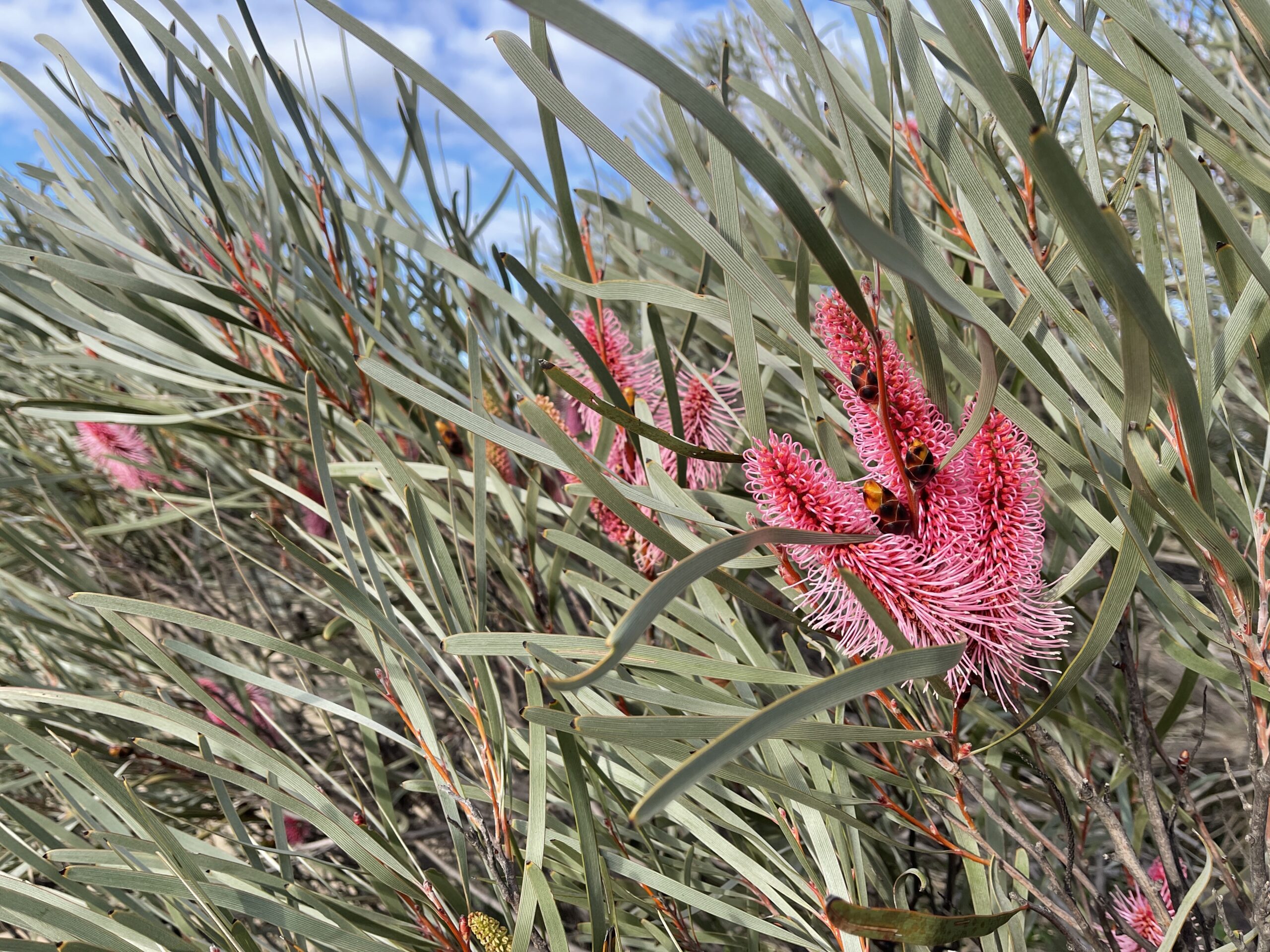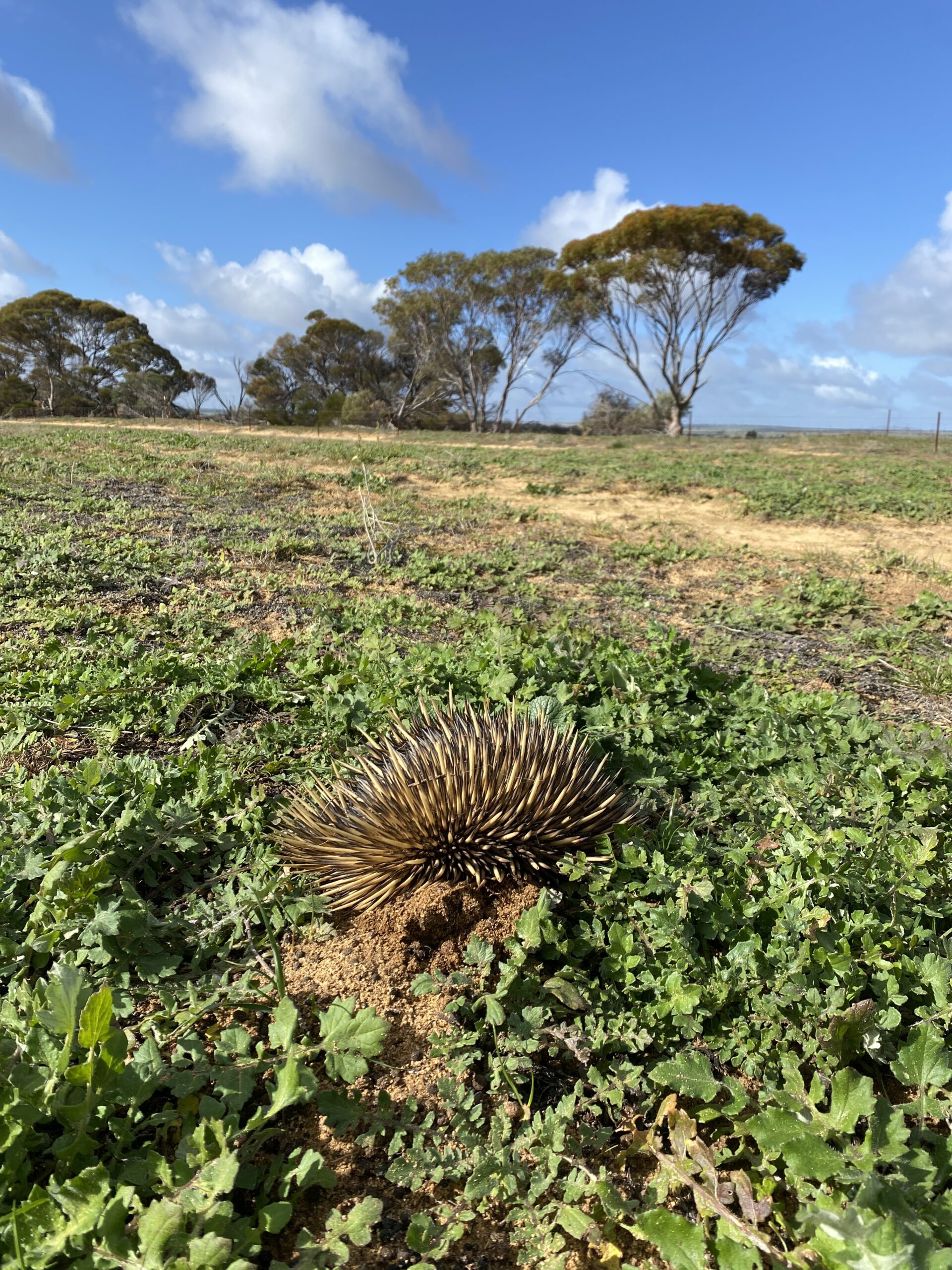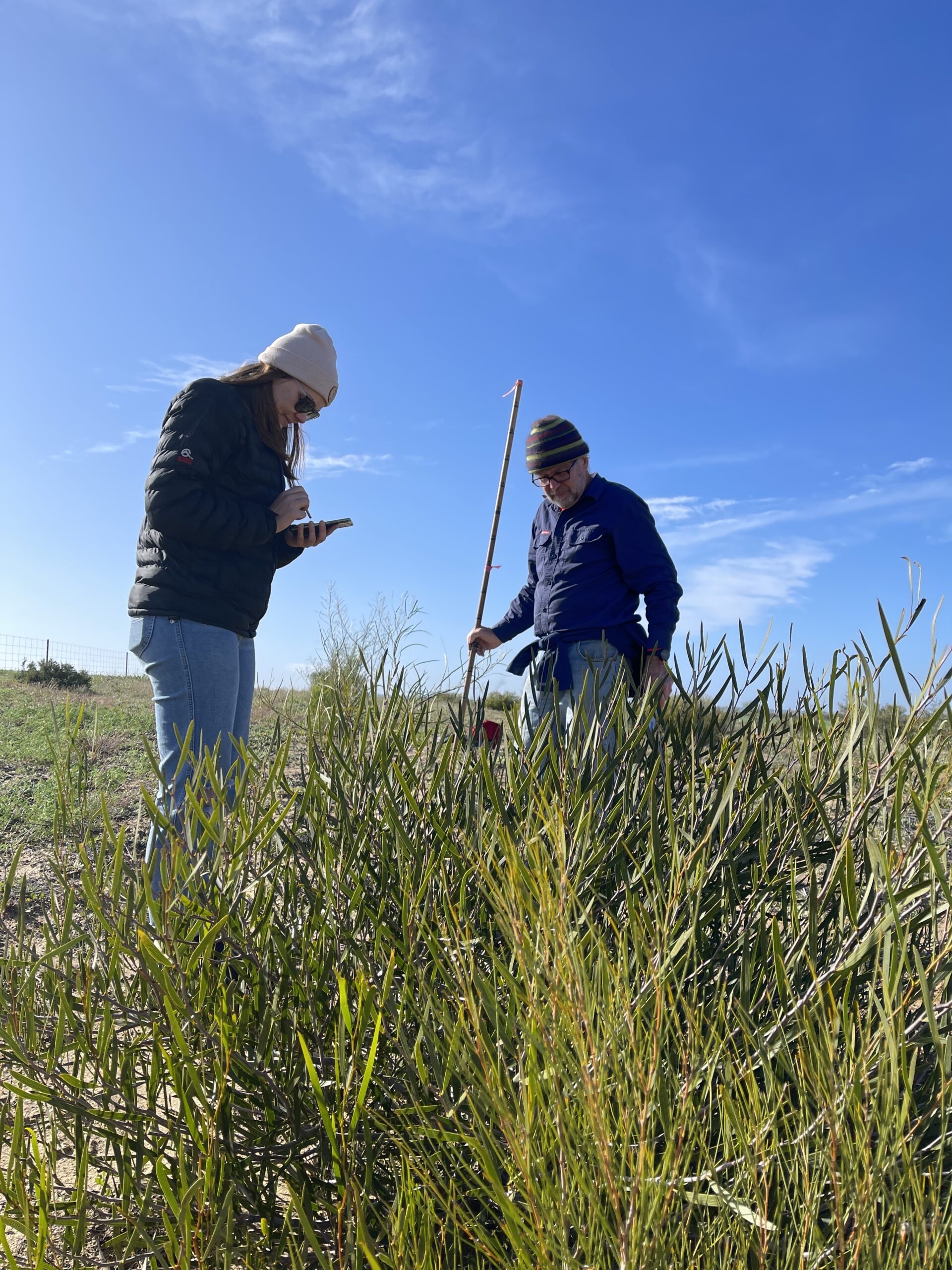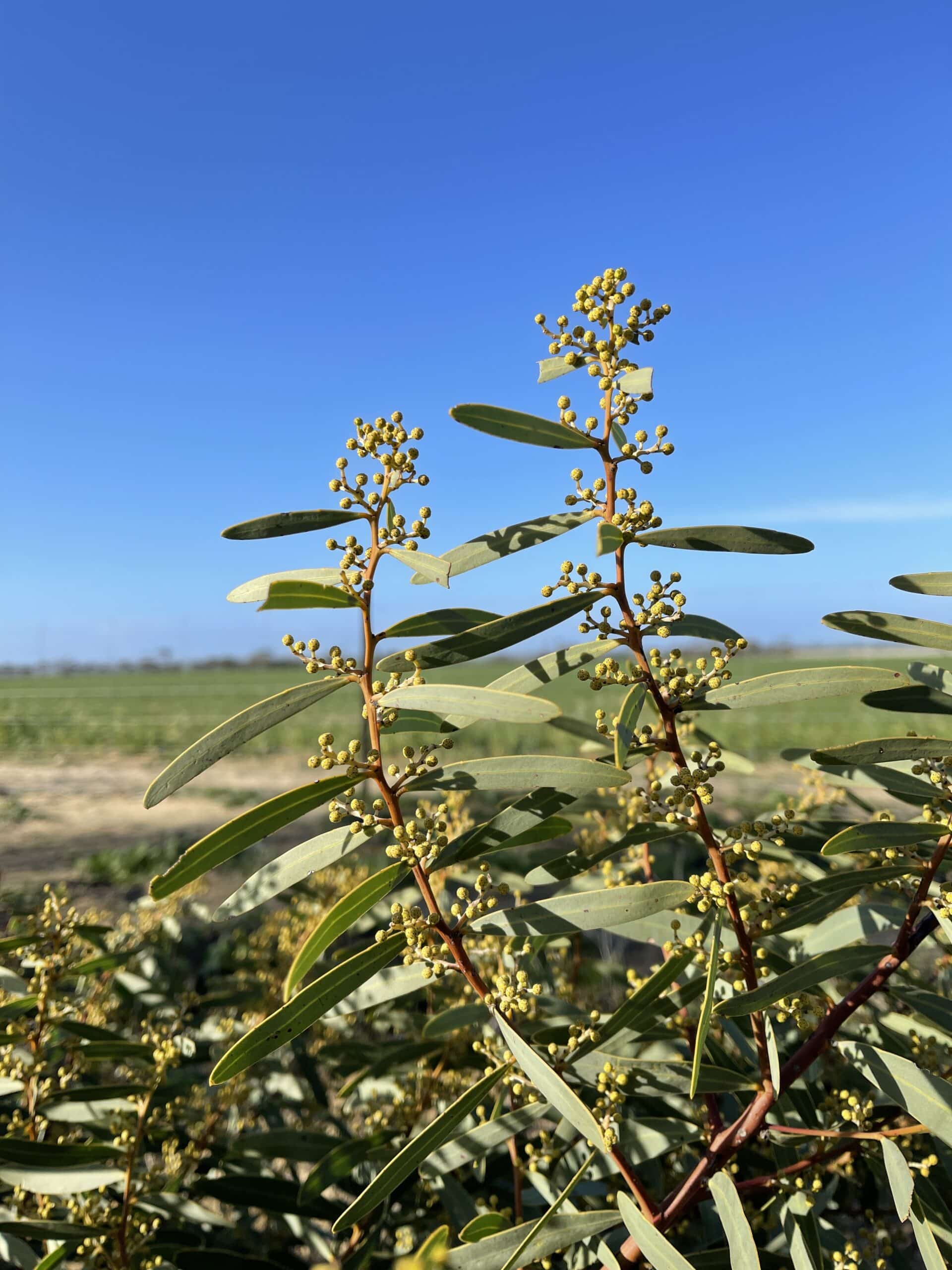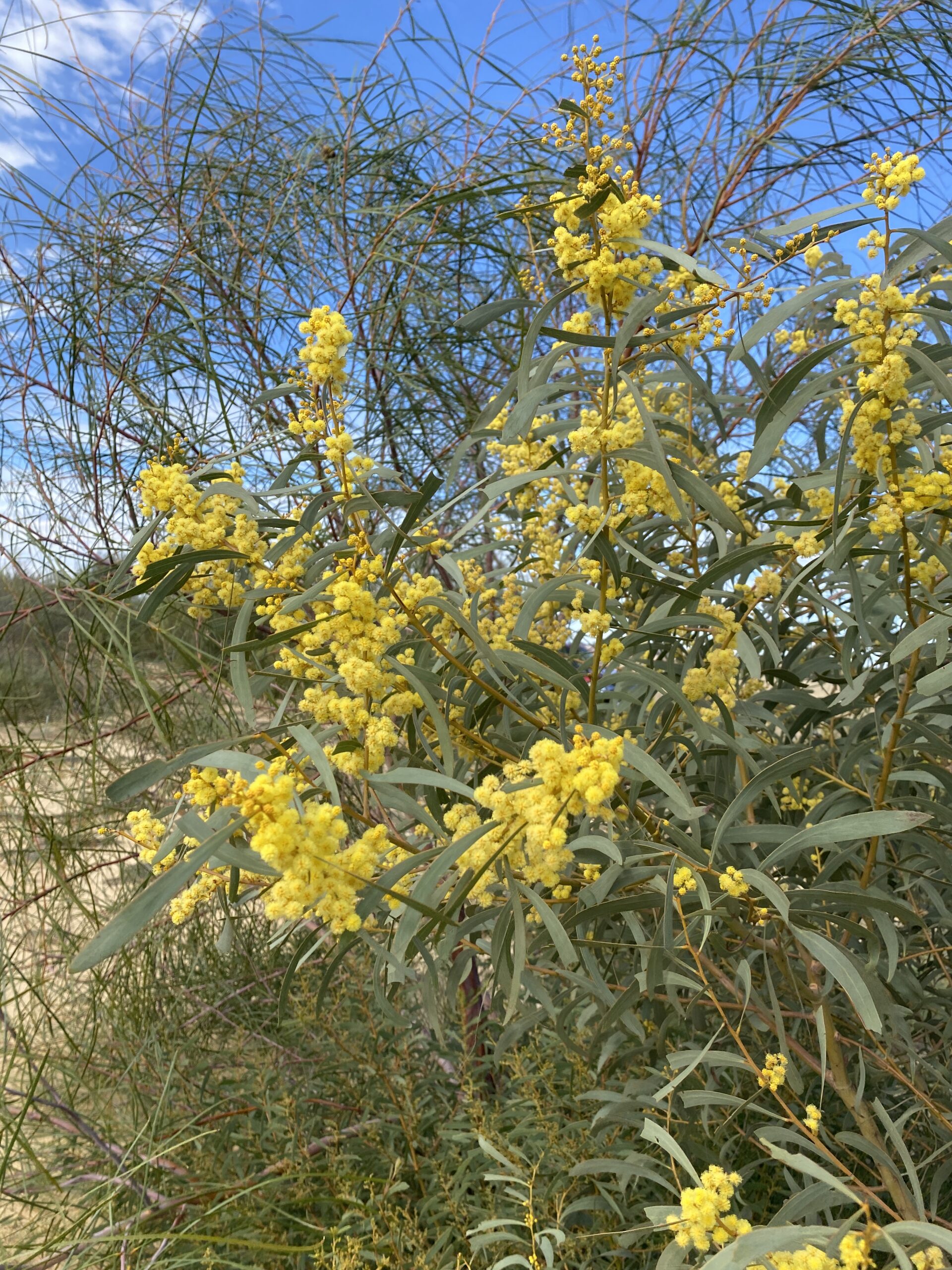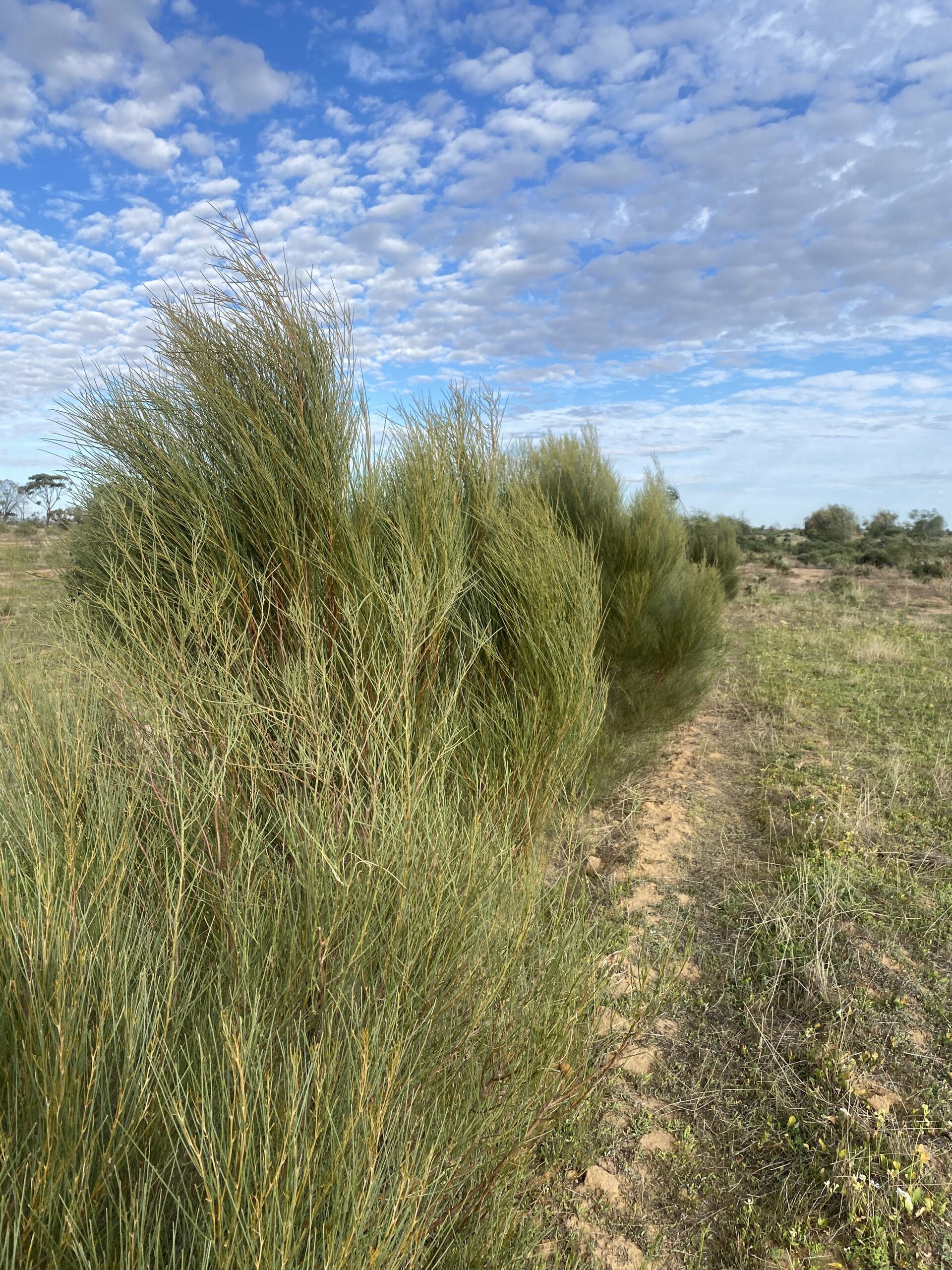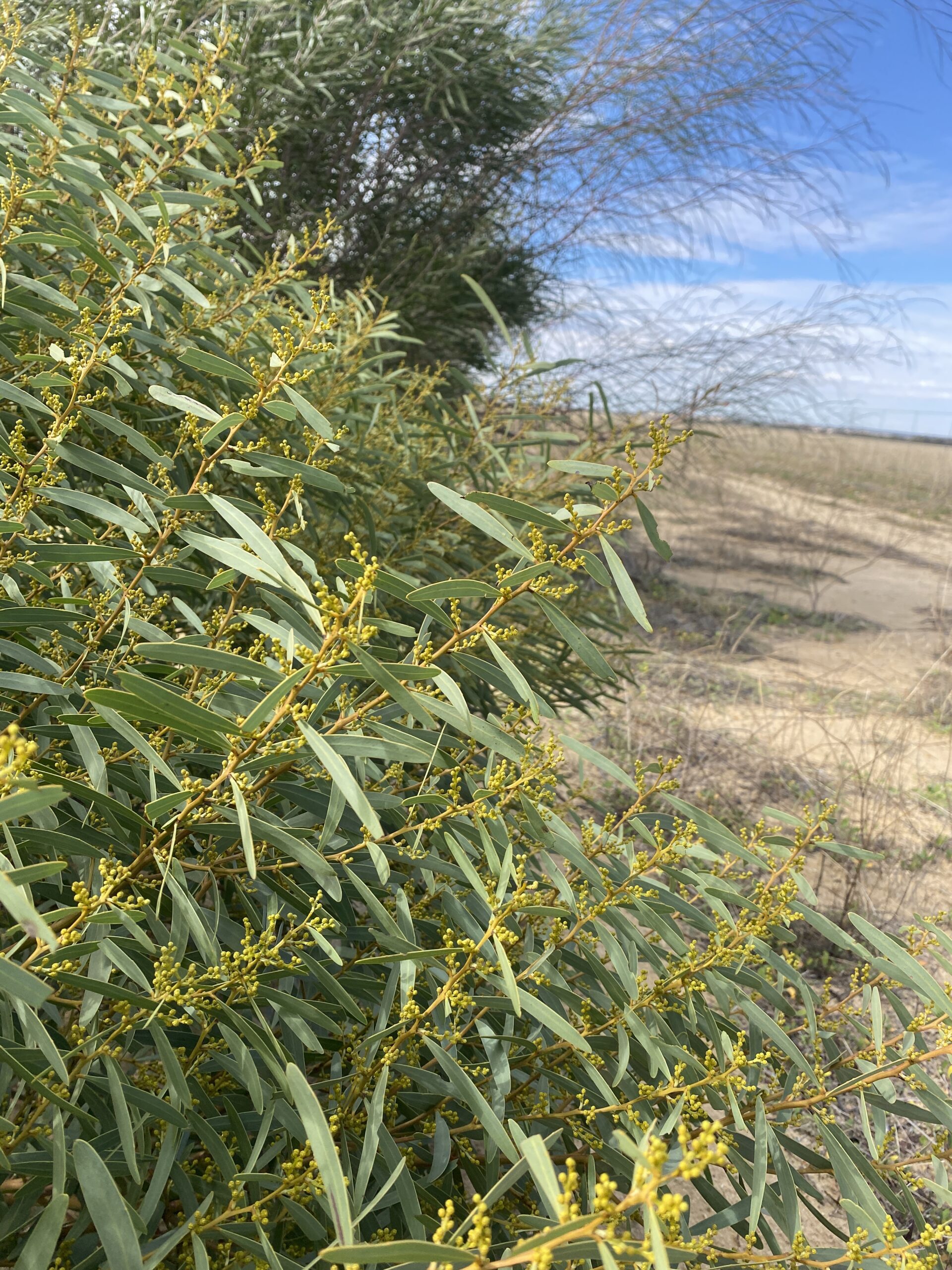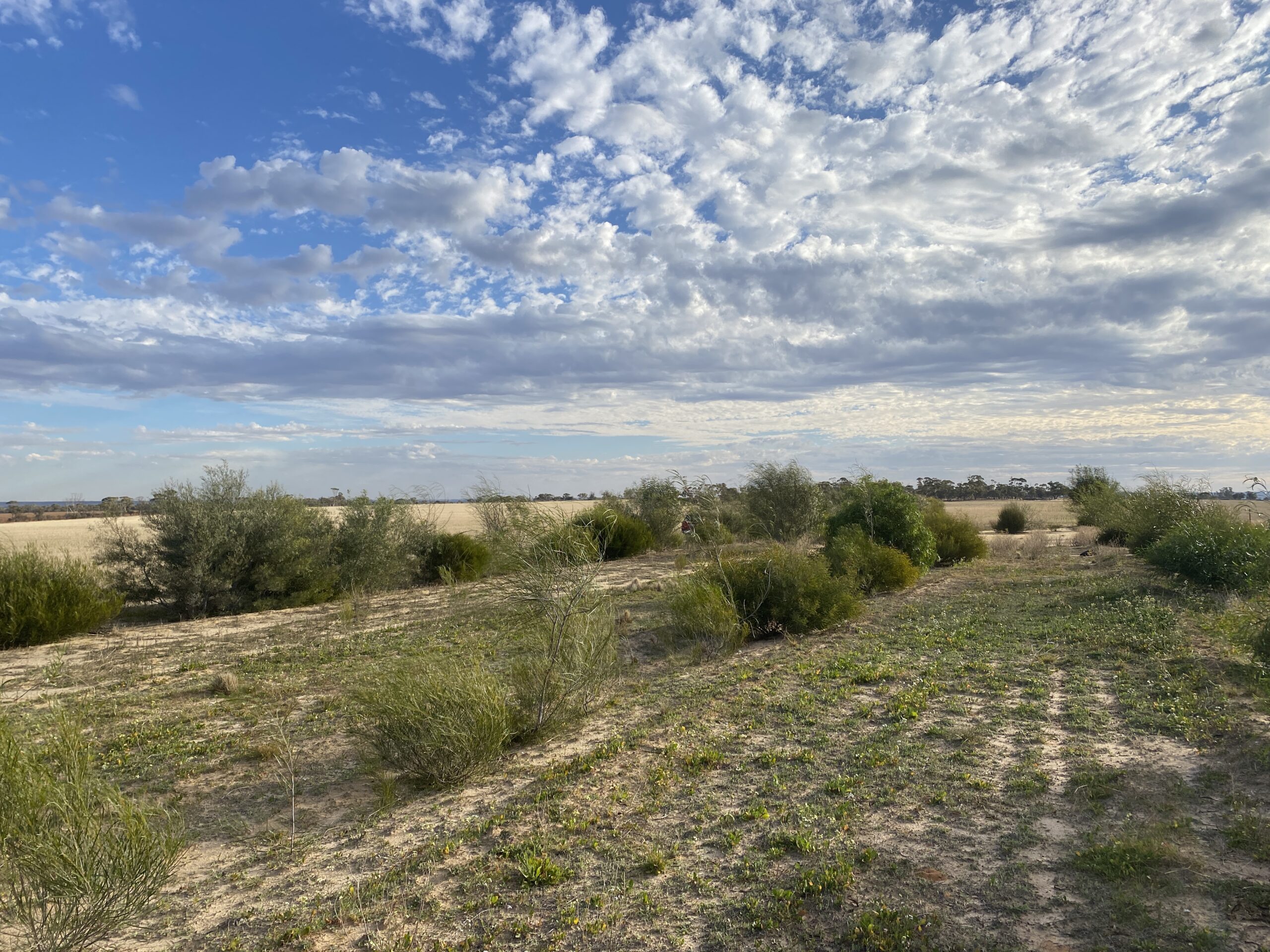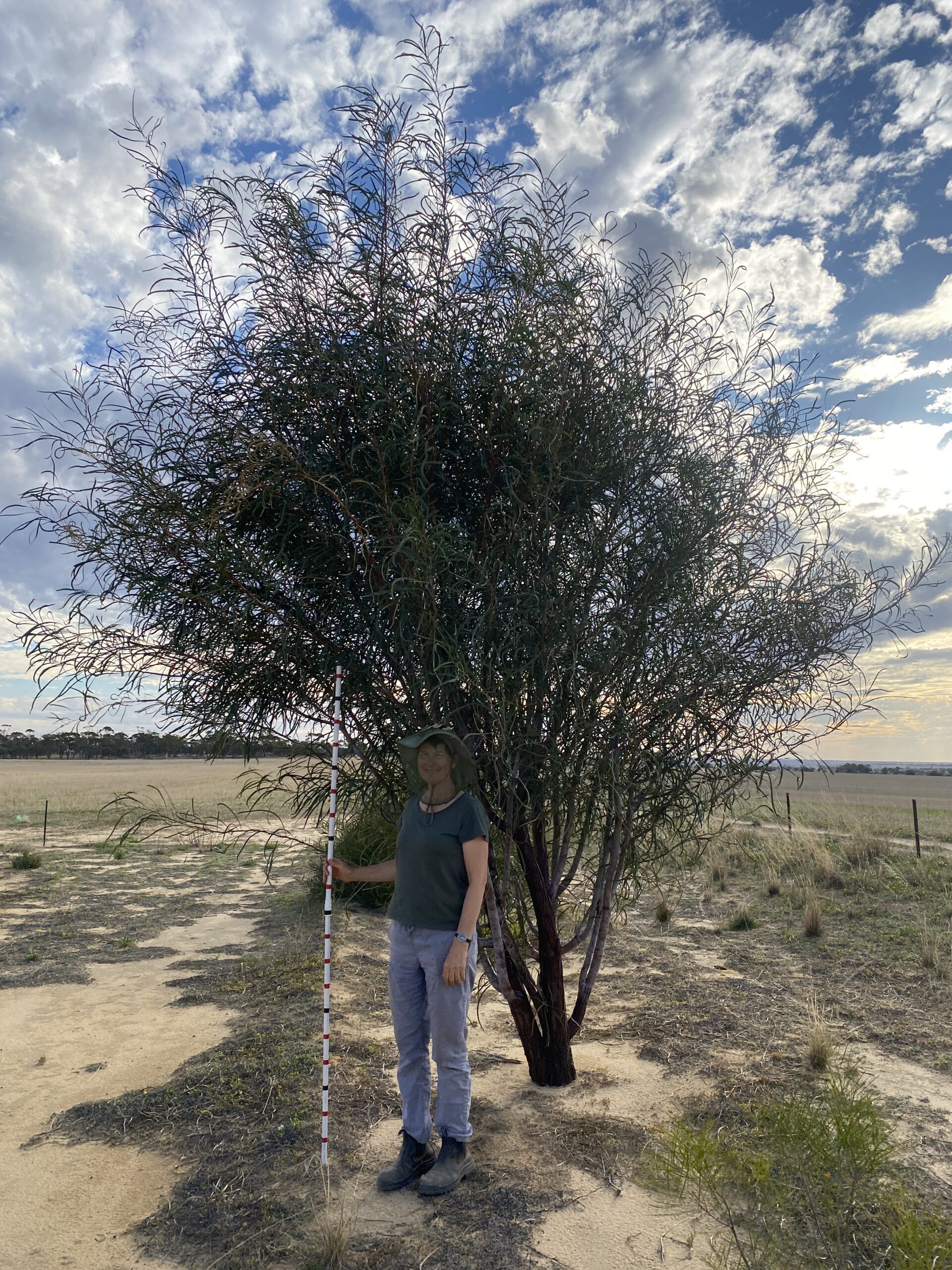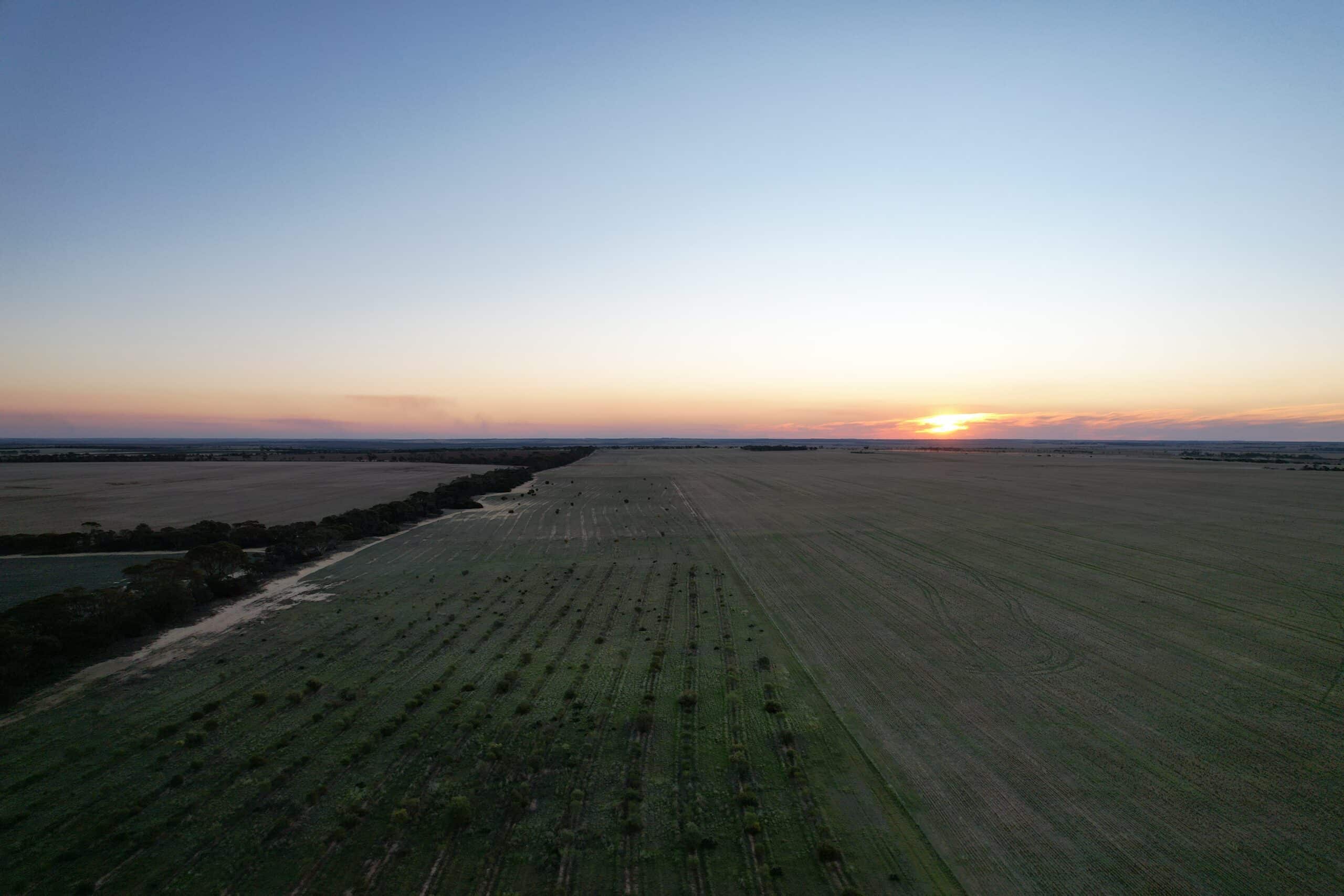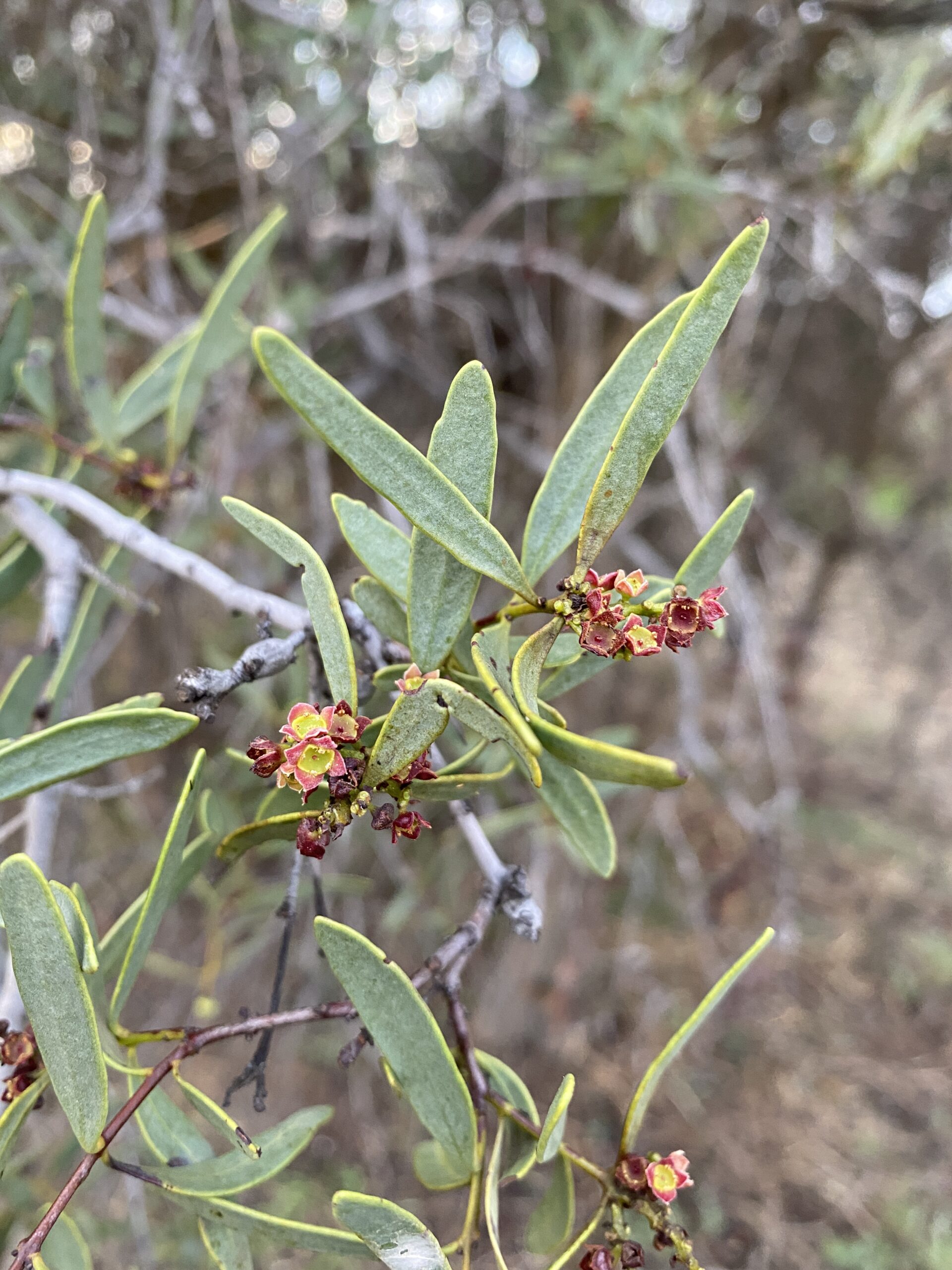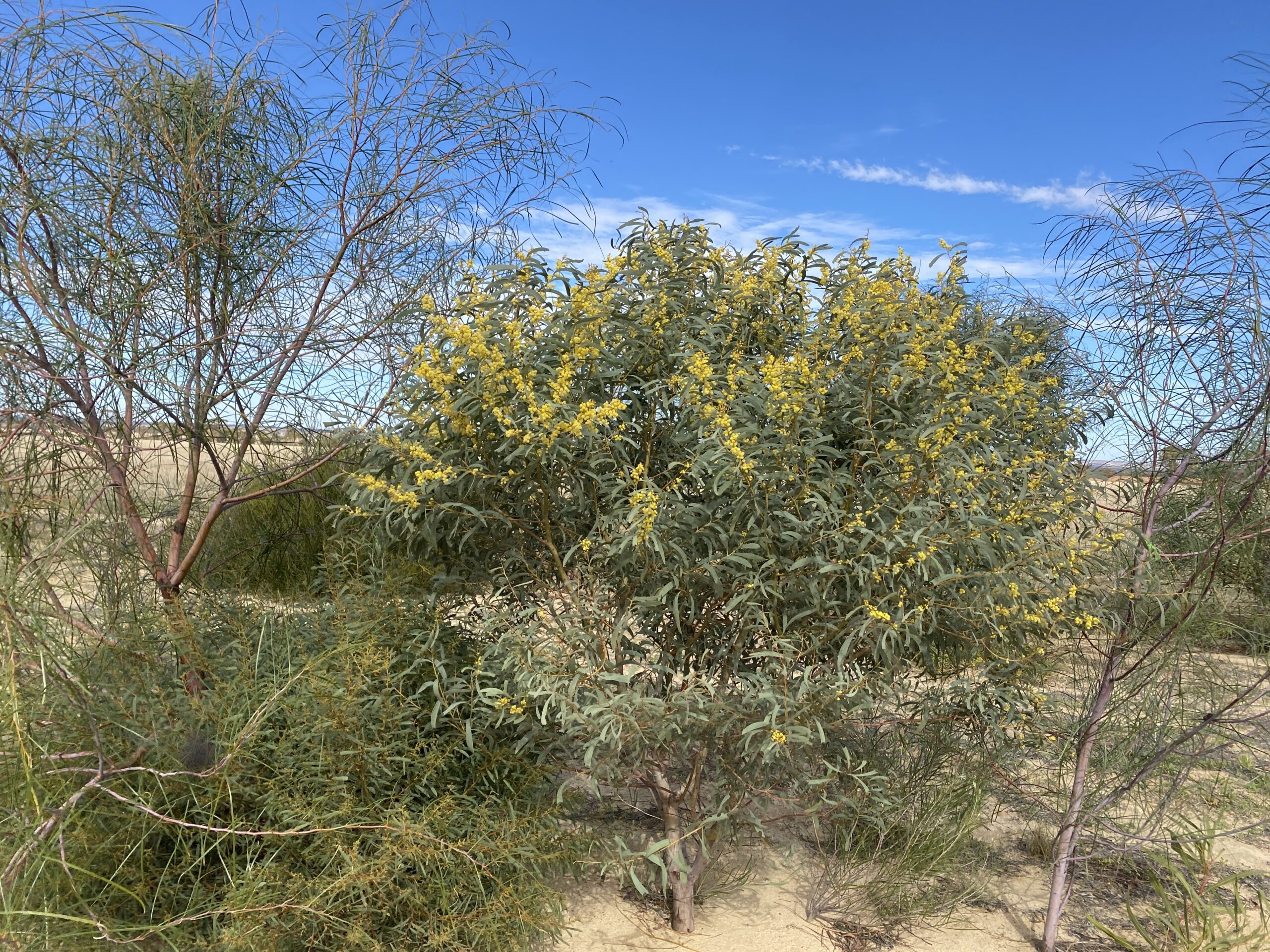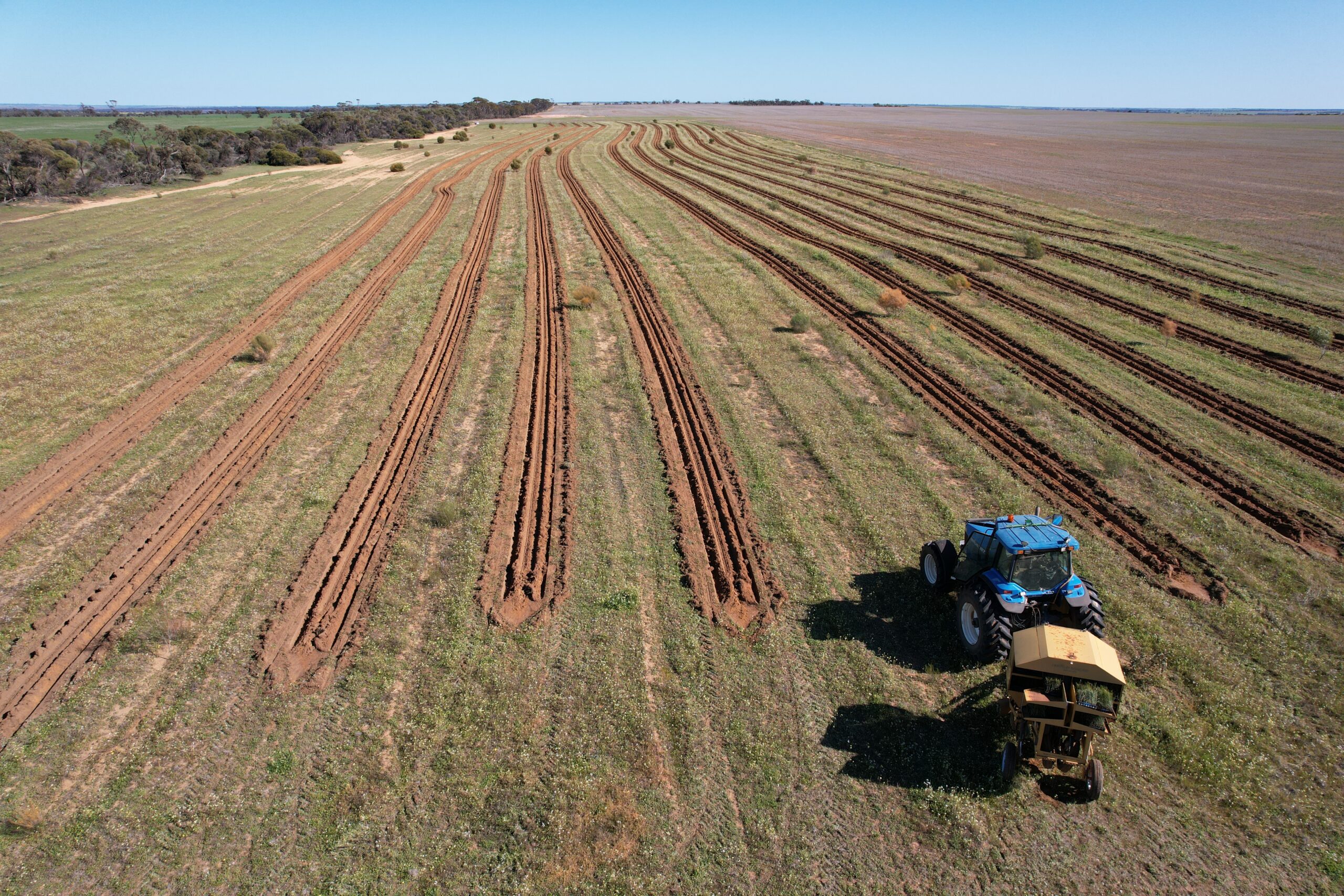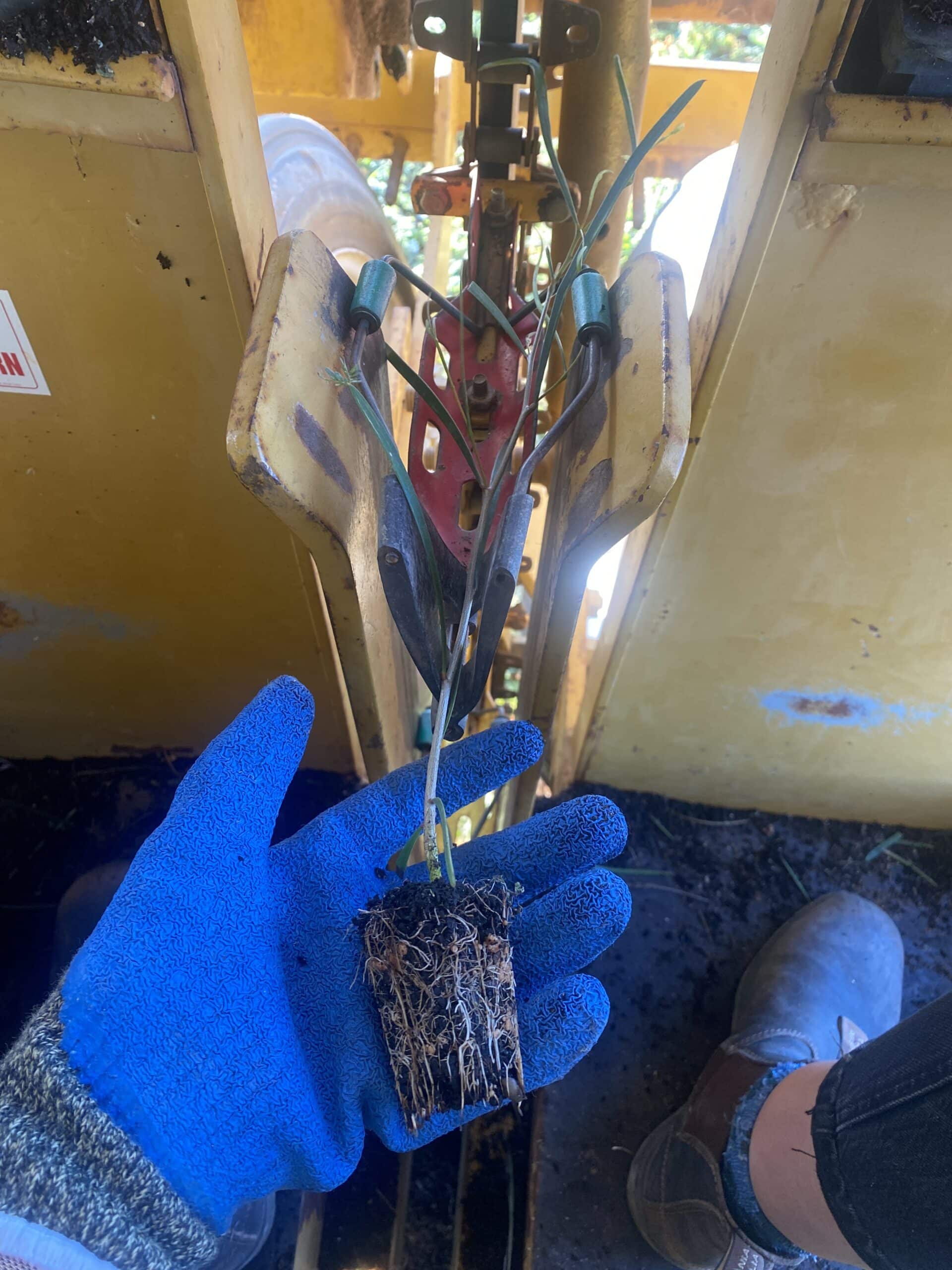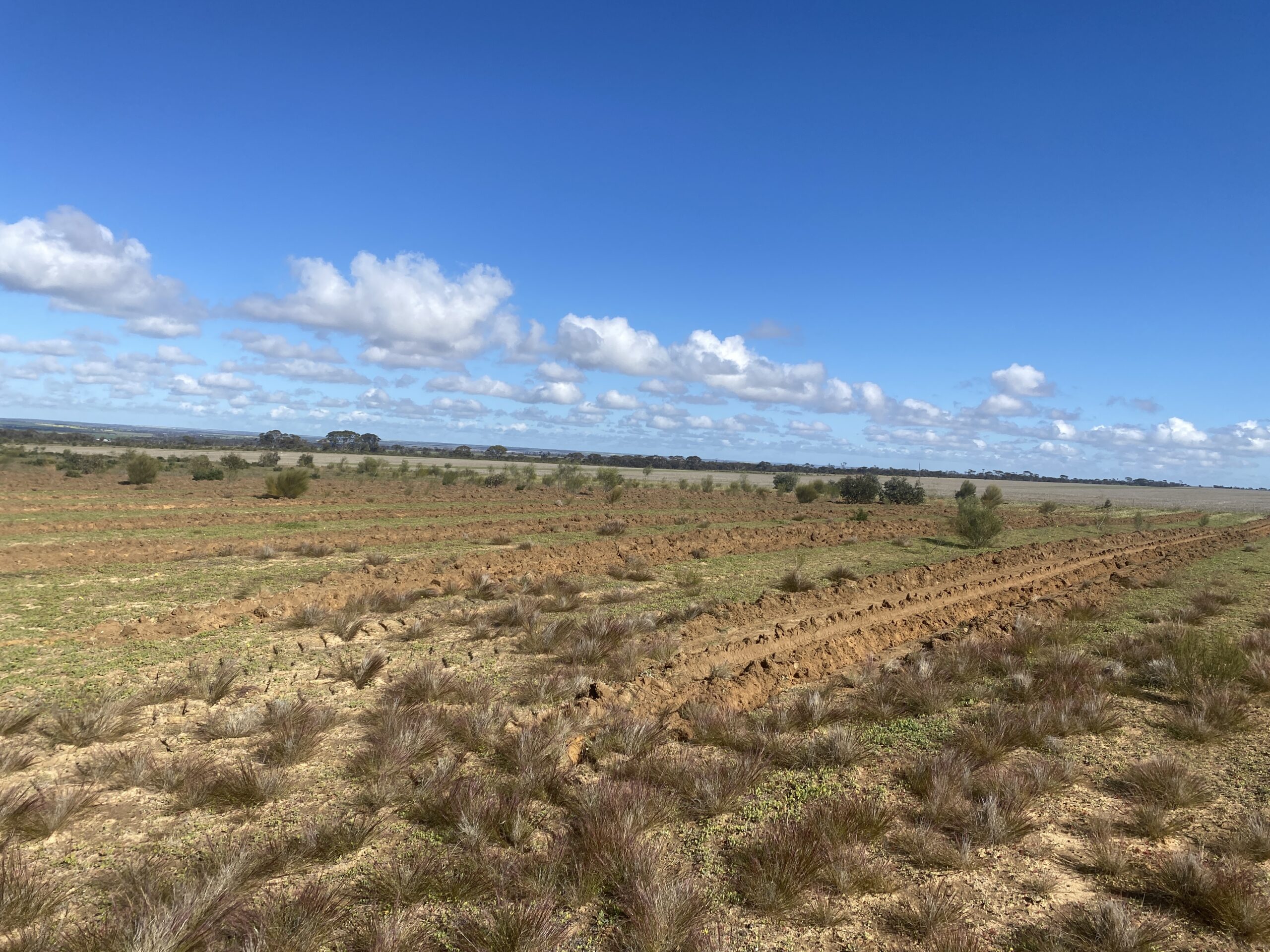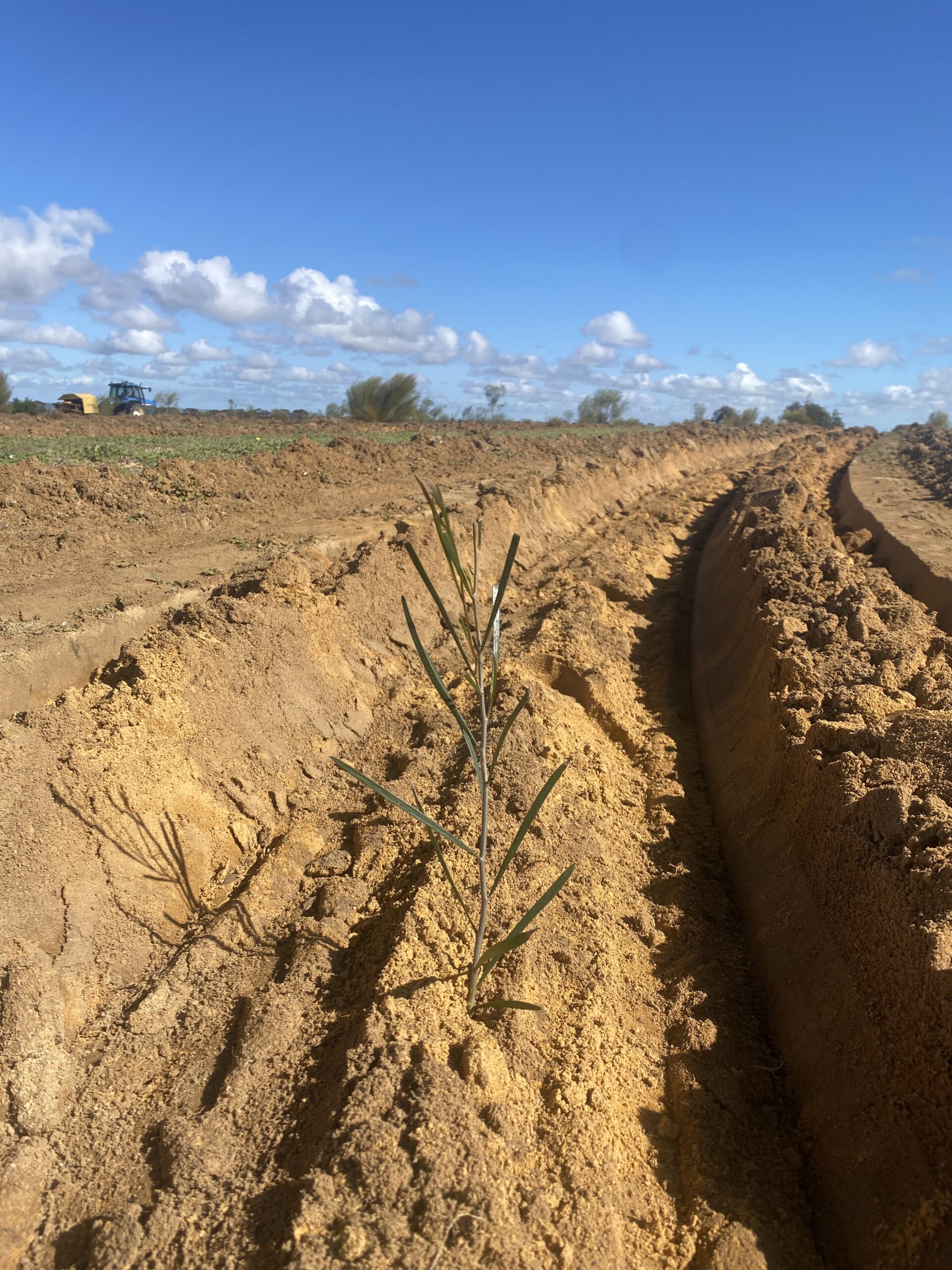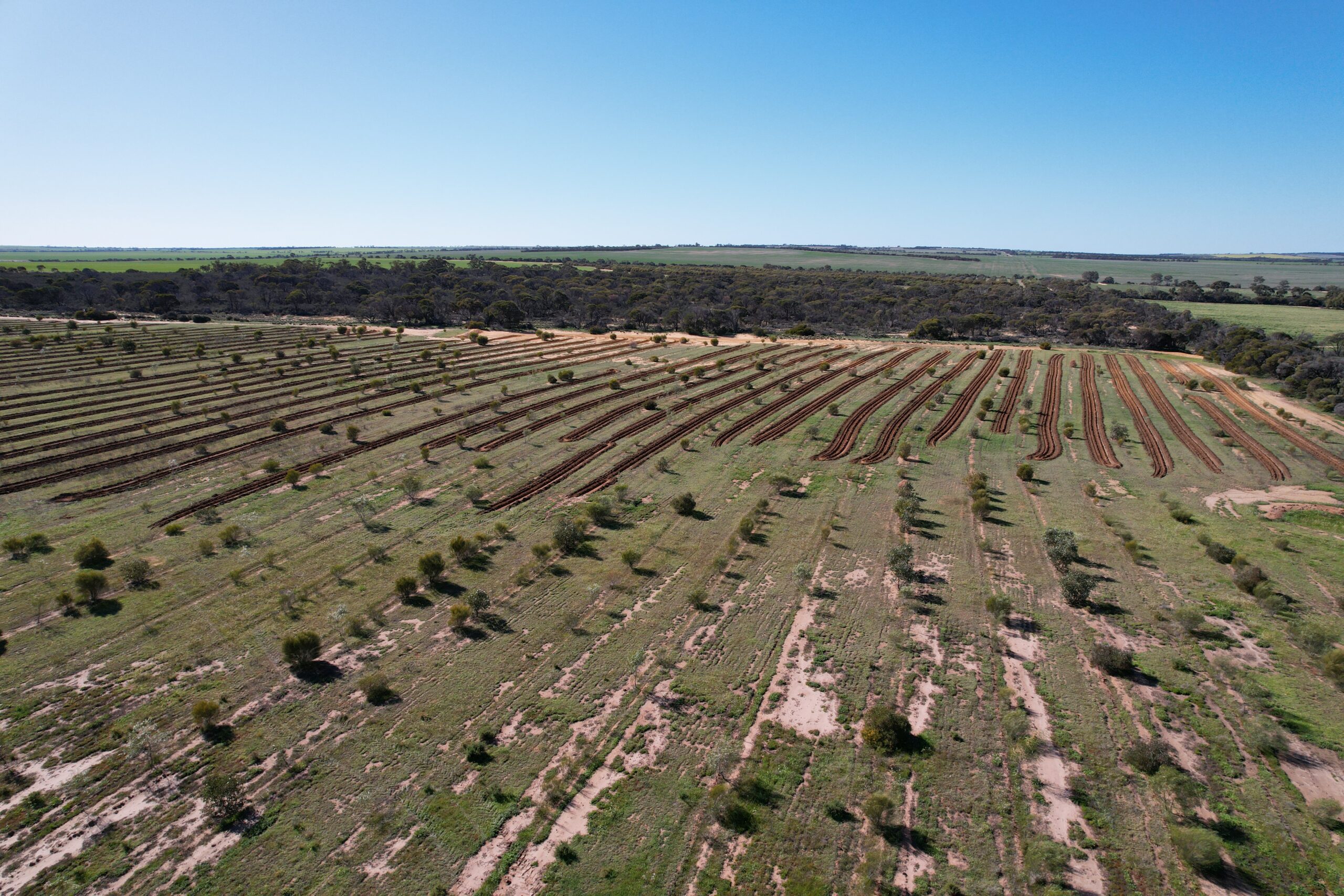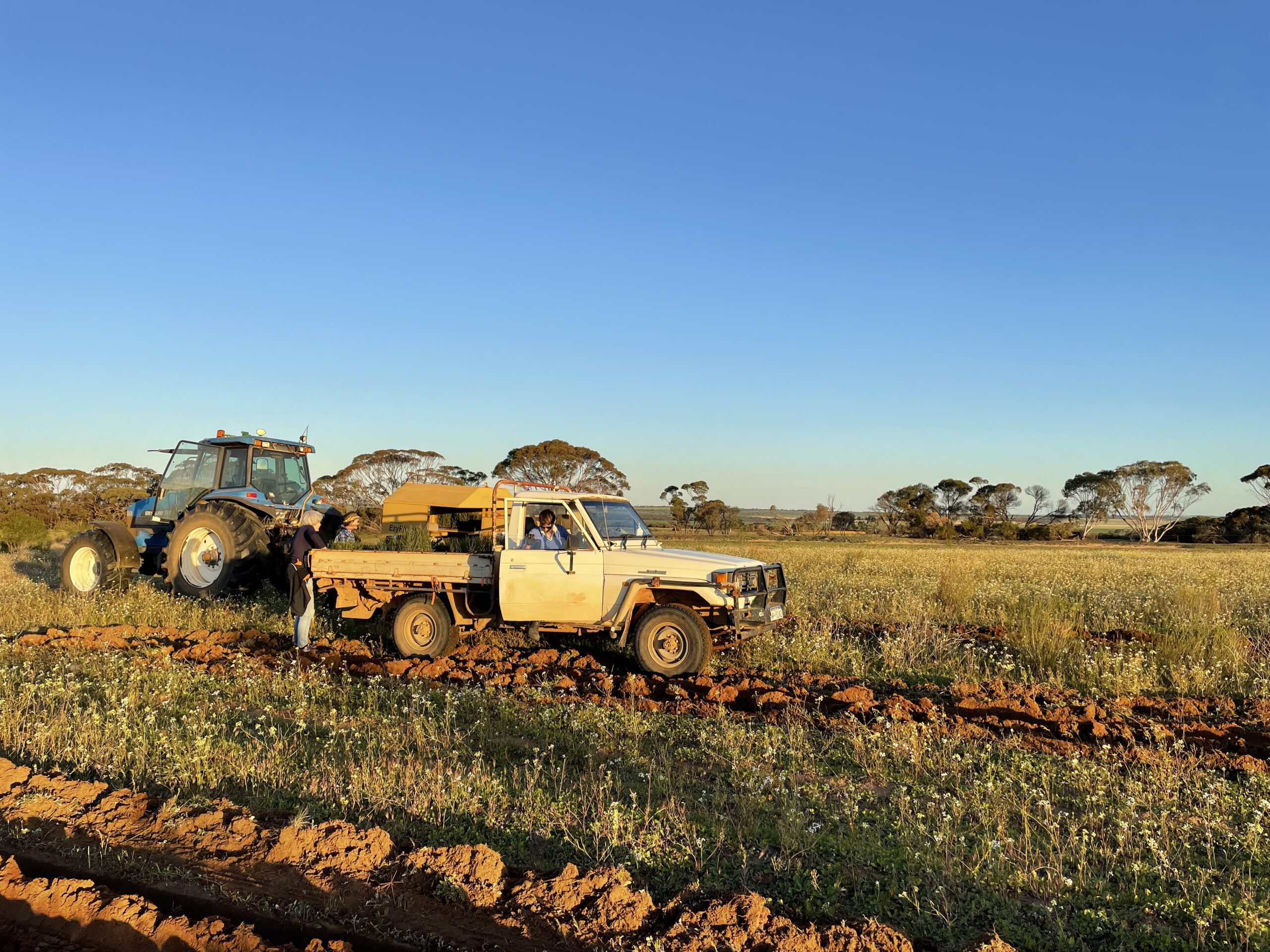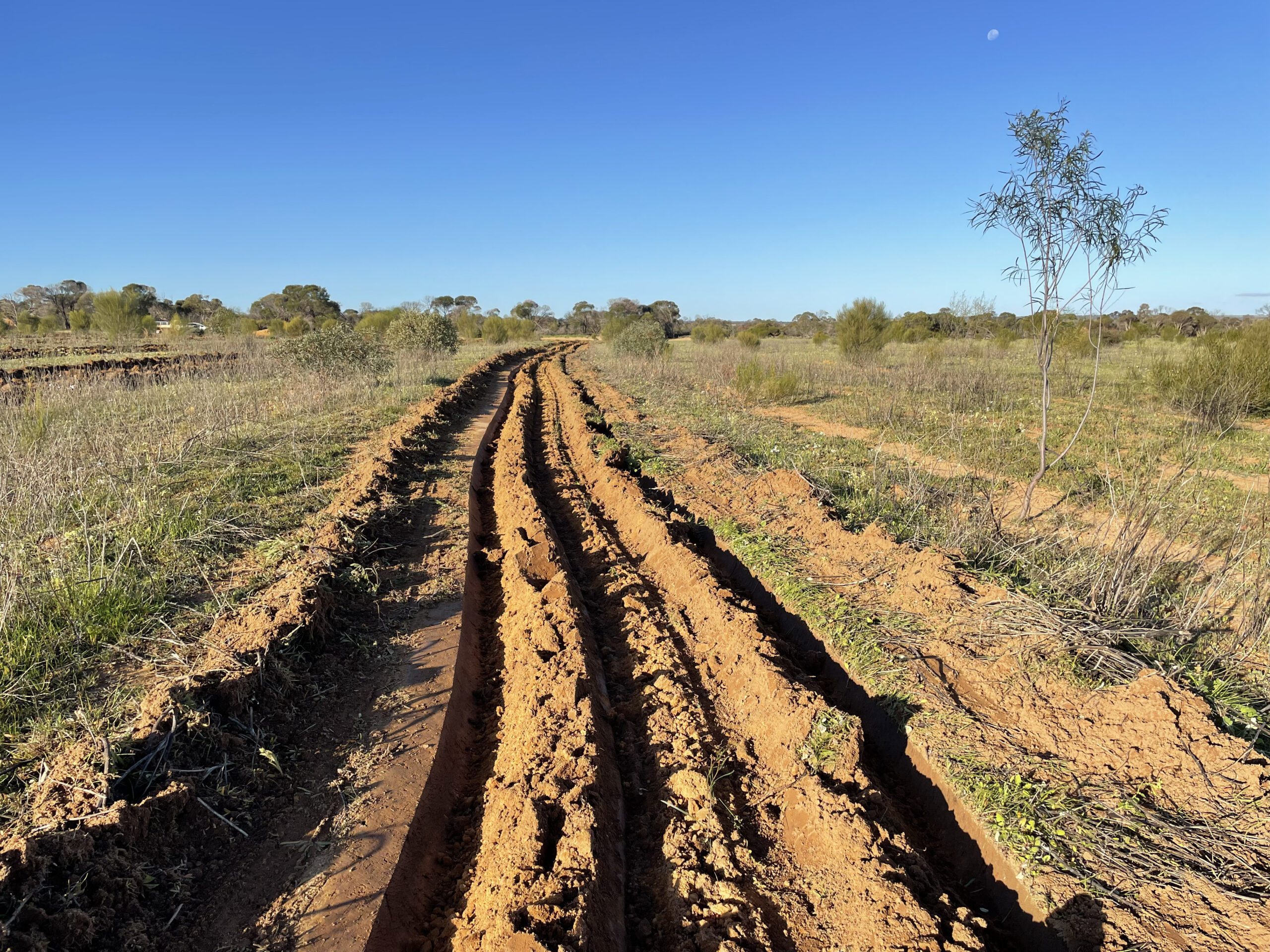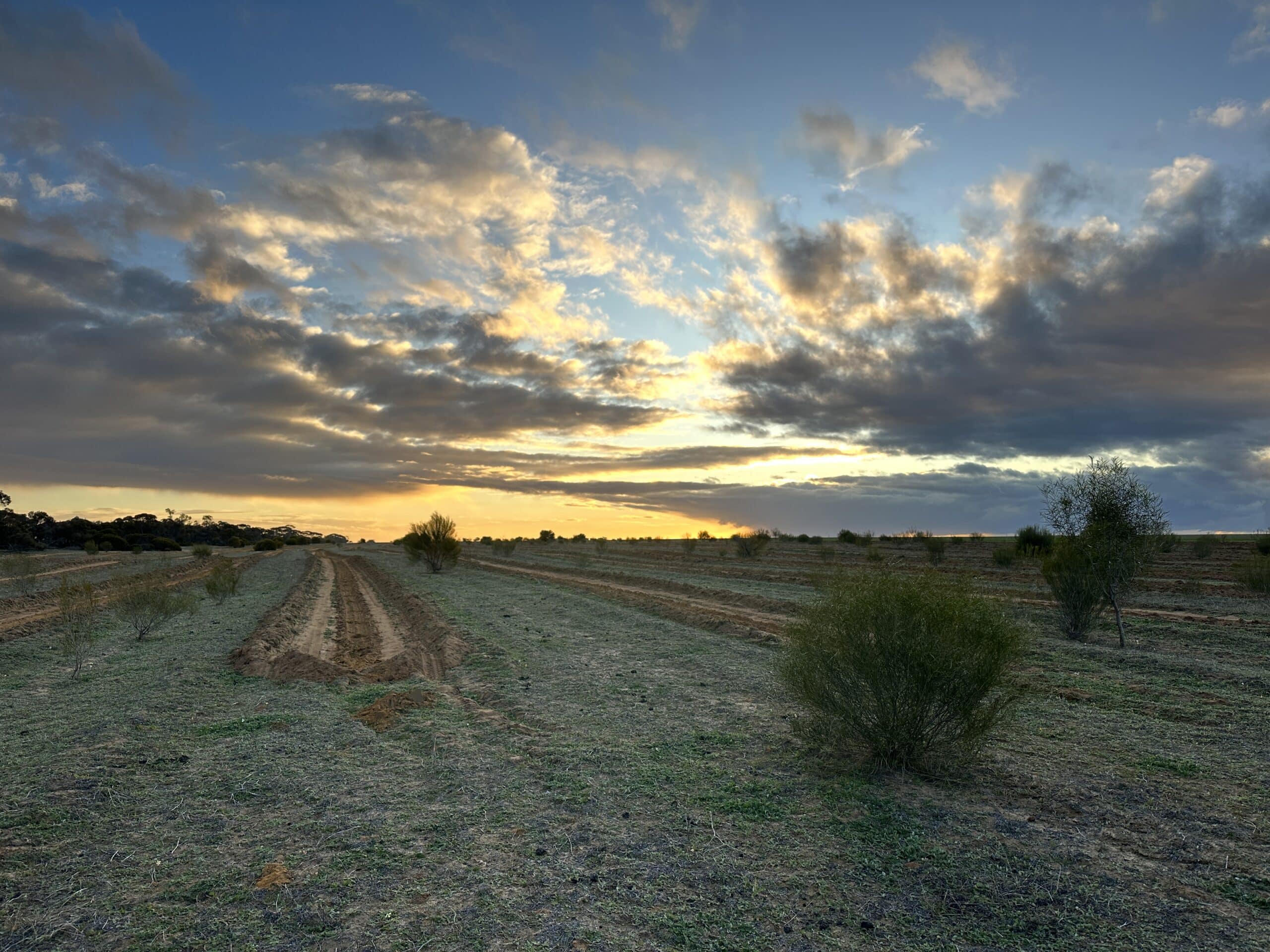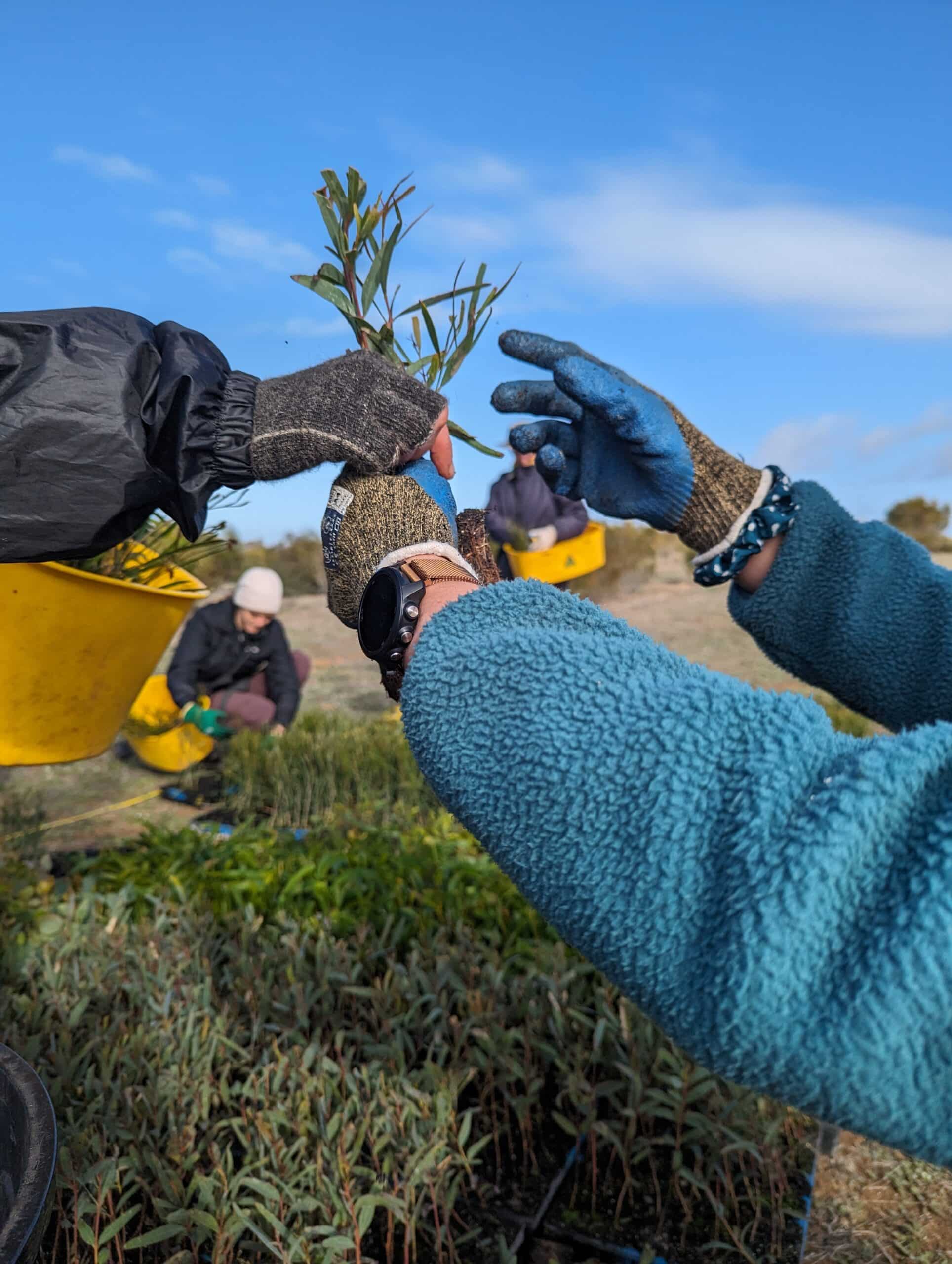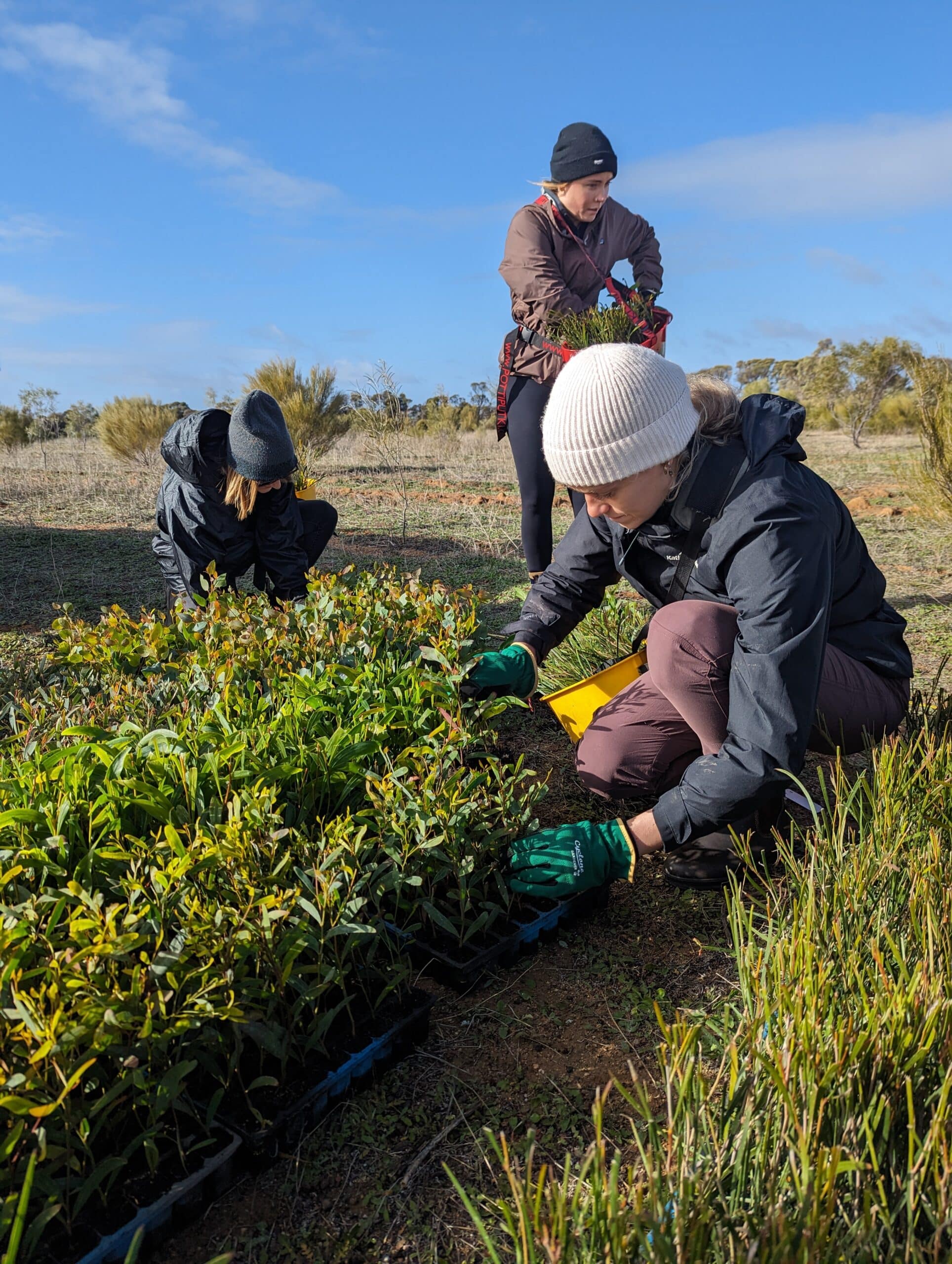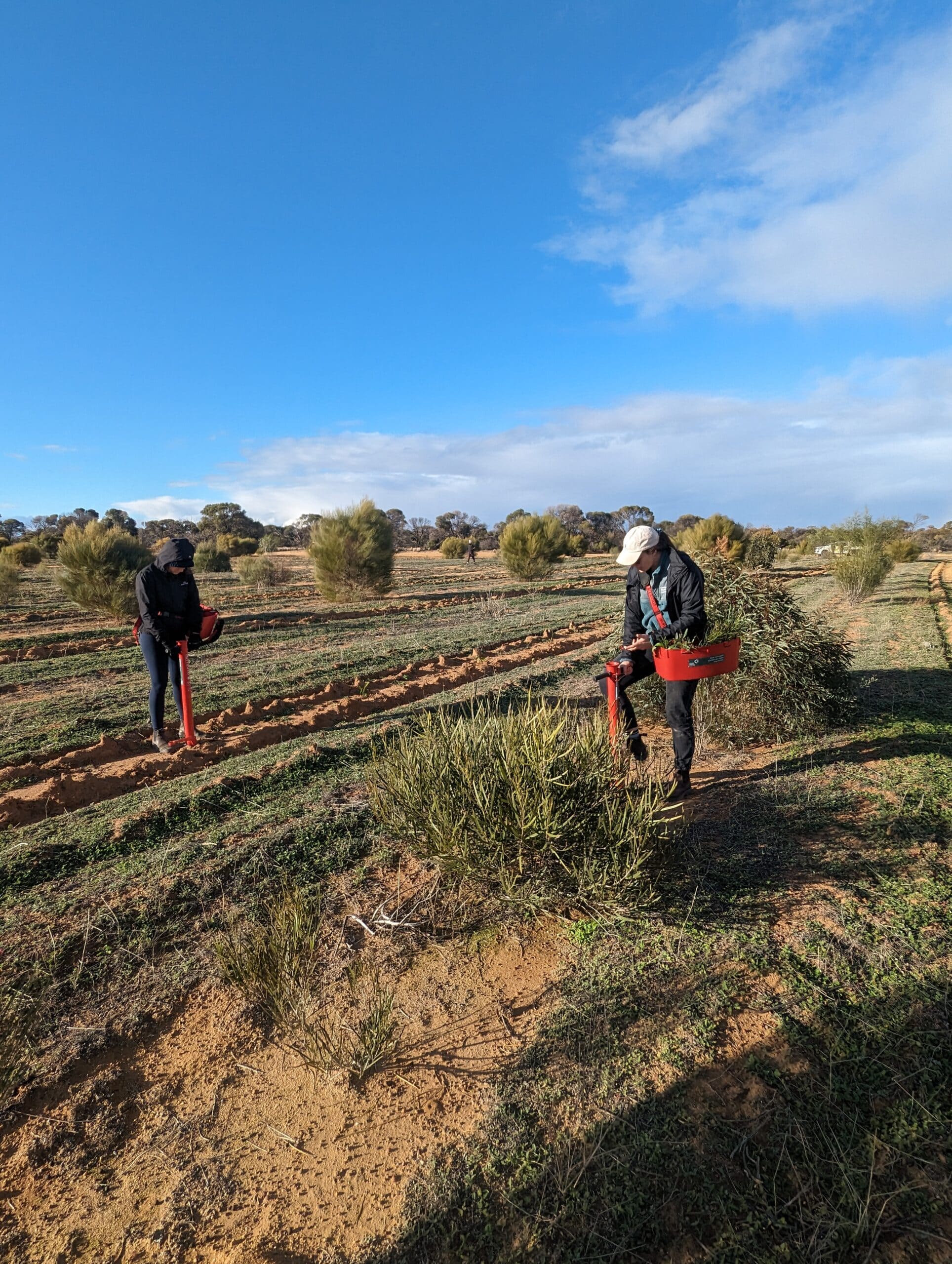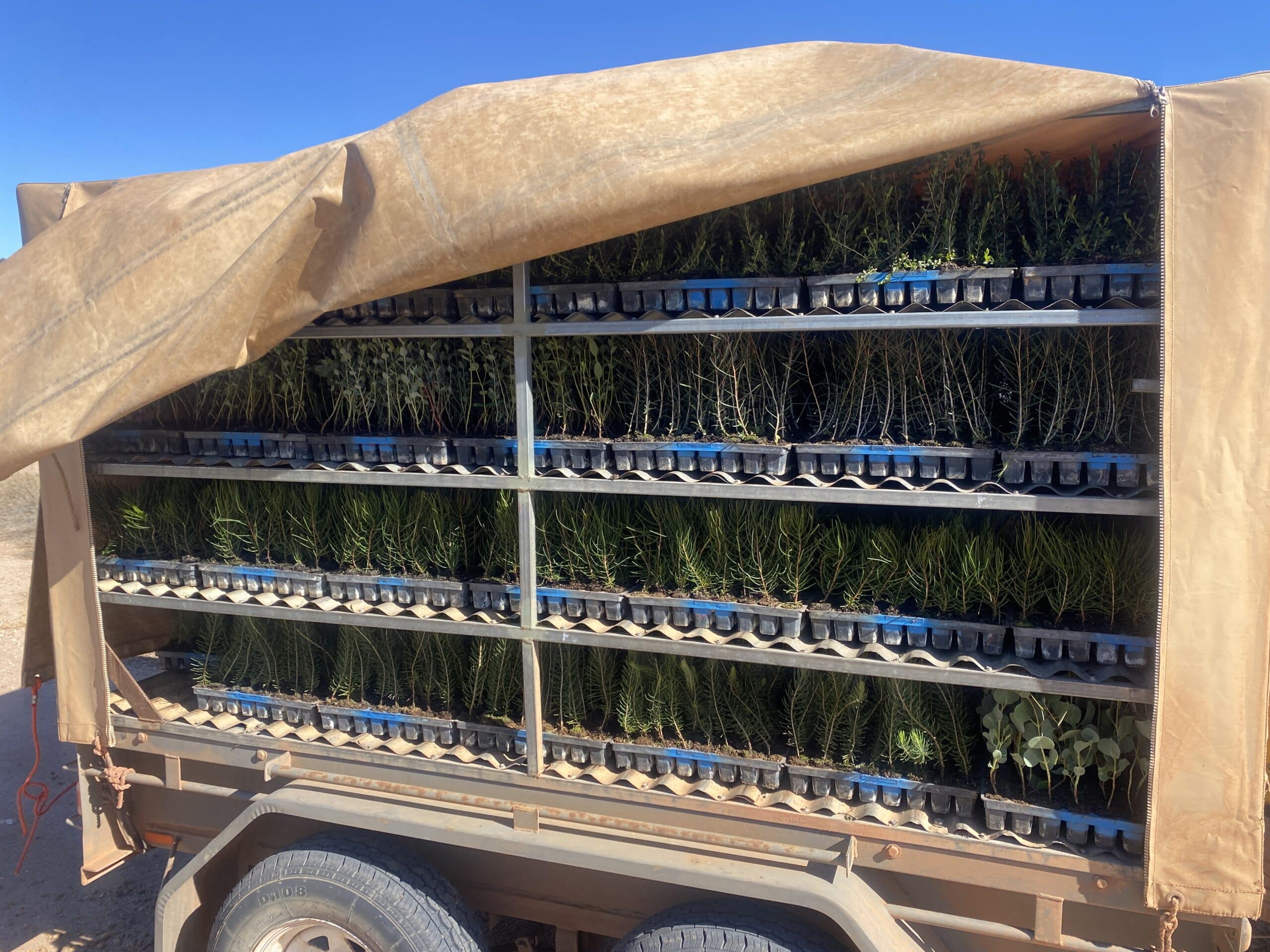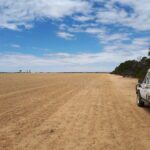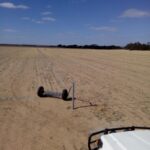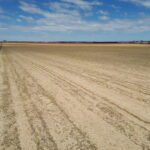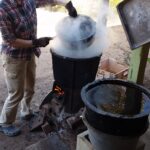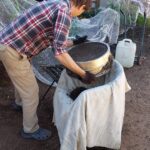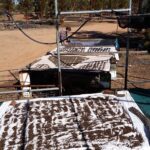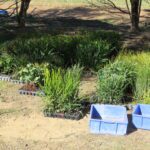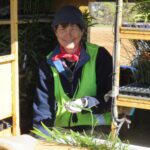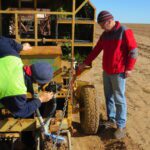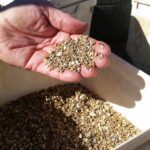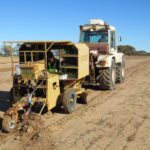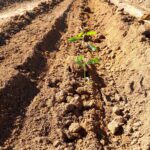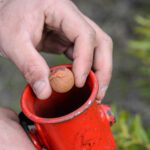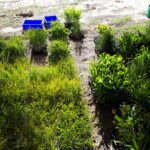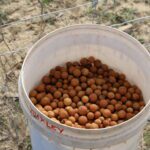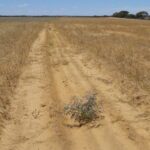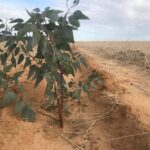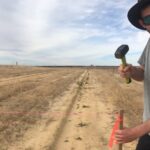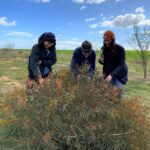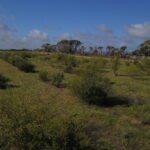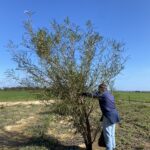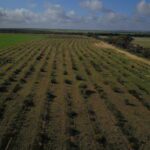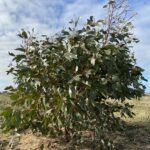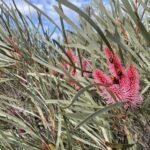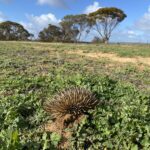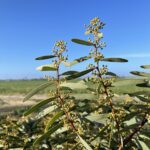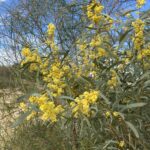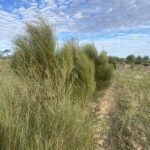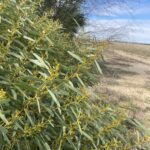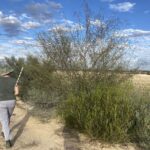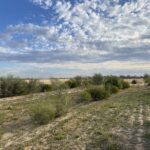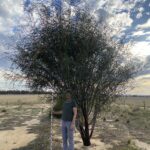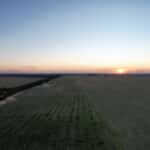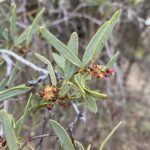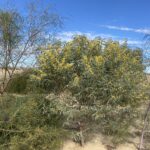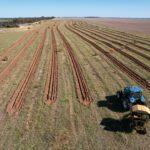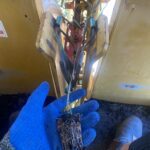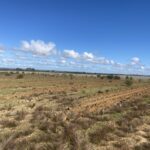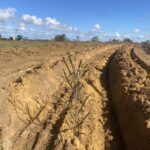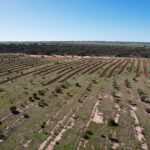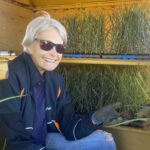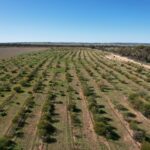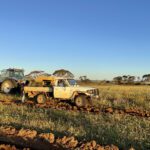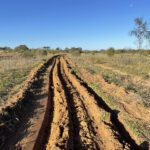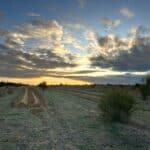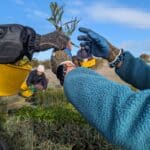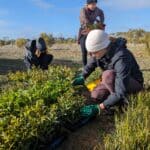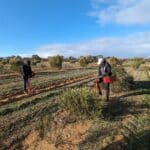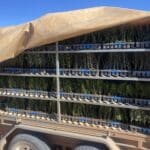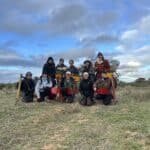![Photo of a sandy paddock with a white ute in the far right next to a tree line.]()
Initial site photo prior to planting.
![Photo of a sandy paddock with a roll of fencing wire on the ground in front of a white ute bonnet.]()
Fencing being established around the perimeter of the planting site.
![]()
Fenced and ripped ready for planting.
![Woman wearing gloves holding pot over a smoking pot]()
Ros MacFarlane (Sandalwood Solutions) treating the native seeds with smoke to aid the germination process.
![]()
Seed collection and treatment process.
![Large white sheets covered with small brown seeds]()
Native seed being dried following the smoke treatment.
![Trays of native Australian seedlings on the ground with two empty blue buckets in the foreground]()
Seedlings ready for planting.
![Lady sitting in a trailer wearing a navy blue beanie and high vis yellow vest holding a seedling]()
Ros MacFarlane (Sandalwood Solutions) in the planting trailer.
![Woman wearing a high-vis vest and beanie with her back to the camera and man wearing red jacket standing at a direct seeding trailer.]()
Ros MacFarlane (Sandalwood Solutions) and Peter Ritson (Farmwoods) in the process of planting.
![A man's hand holding a handful of mixed native seed mix over a full bucket of seeds]()
A handful of native seed mix ready for planting.
![Tractor towing a trailer driving across a sandy paddock.]()
Direct seeder being towed by a tractor in the process of planting.
![Close up of Eucalyptus seedlings planted in a ripped line]()
Eucalyptus seedlings planted in the ripped line.
![Close up photo of a persons hands holding a small round nut and a red metal tube.]()
Sandalwood seed being placed into a pottiputki planting device.
![Vibrant green seedlings in trays on the ground.]()
Seedling trays of Acacia and Eucalyptus for planting.
![White bucket full of large, round sandalwood seeds.]()
Sandalwood seed ready for planting.
![Photo of a dried paddock with a row of small planted seedlings.]()
Initial survival of seedlings in Summer 2019.
![An established seedling growing in sandy soil with dry crops.]()
A well established Eucalyptus seeding during Monitoring 2019.
![Man wearing glasses and a hat hammering a wooden stake into the ground of a sandy paddock.]()
Volunteer setting up a monitoring quadrat.
![Three people in beanies and dark jackets surrounding a small shrub.]()
Ros (Sandalwood Solutions), Peter (Farmwoods) and Alice (CPOZ) admiring a thriving plant.
![Photo showing rows of green, planted shrubs in a paddock.]()
Planting rows showing good establishment and growth during monitoring in July 2021.
![Man in blue clothing standing next to a tree in a paddock.]()
Peter (Farmwoods) checking the growth of a tree during monitoring.
![Drone photo showing birds eye view of green rows of planted shrubs.]()
Drone photo of established planting rows across the Bencubbin site.
![Small and bushy green tree growing in a paddock.]()
Established Eucalyptus tree.
![Close up photo of three long pink flowers and light green foliage.]()
Hakea francisiana (‘Emu tree’) near the Bencubbin planting site.
![Echidna burrowed in the ground surrounded by small green ground covering plants.]()
Echidna enjoying the winter sun during monitoring at Bencubbin.
![Girl wearing a black jacket and pink beanie taking notes on a clipboard next to a man holding a measuring stick with a native Australian shrub in the foreground.]()
Dr Peter Ritson (Farmwoods) and Jess (CPOZ) recording data during monitoring.
![Close up of a native Australian Acacia tree]()
Close up of a healthy Acacia spotted during monitoring.
![Wattle plant with yellow flowers]()
Beautiful flowering Acacia microbotrya (‘Manna wattle’).
![Dense green shrubs in a row]()
A few very healthy Acacia resinimarginea (‘Old Man Wodjil’) shrubs.
![Shrub with very straight leaves]()
Acacia brumalis (‘Winter wattle’).
![Person walking towards a row of shrubs]()
Ros MacFarlane (Sandalwood Solutions) next to a dense planting row.
![Three rows of green shrubs in a paddock]()
Great growth along planting rows.
![Woman standing with a white pole next to a tree]()
Ros MacFarlane (Sandalwood Solutions) standing next to a very tall Acacia lasiocalyx (‘Shaggy wattle’).
![Sunset over a farm paddock]()
Sunset over the planting site.
![Close up photo of leaves and small red flowers]()
Flowering Sandalwood (Santalum spicatum) from the surrounding bushland.
![]()
Flowering Acacia microbotrya (‘Manna wattle’) inbetween various other Acacia species.
![Drone photo of tree planting project with tractor in the foreground]()
Infill lines ripped and planted in a patchy area of the site.
![Gloved hand feeding a seedling into a tree planting machine]()
Feeding one of the Acacia acuminata (‘Jam Wattle’) seedlings into the machine planter.
![Paddock with lines ripped ready for tree planting]()
New lines planted to infill patchy areas of the site.
![Acacia acuminata seedling planted in the middle of a rip line]()
One of the 6,000+ seedlings planted by Ros (Sandalwood Solutions) and the CPOZ team.
![Drone photo of tree planting project]()
Infill lines ripped and planted in a patchy area of the site.
![Person sitting in a tree planting machine surrounded by seedlings]()
Gail (CPOZ) feeding seedlings into the machine planter.
![Drone photo of successful native tree planting project with]()
View looking east over a well-established part of the site.
![White ute and tractor on paddock]()
Gail (CPOZ), Jess (CPOZ) and Ros MacFarlane loading seedling trays onto the tractor.
![Ripped planting line in yellow soil]()
Infill planting row.
![sunset over planting rows]()
Beautiful sunset over the planting rows.
![seedlings being handed from one person to another.]()
Seedlings being distributed to the planting team.
![People planting trees at Bencubbin]()
Planting team members collecting seedlings ready for planting.
![People on site for infill planting at Bencubbin]()
Planting team members infill planting seedlings.
![Infill planting at Bencubbin]()
Seedling delivery from Wongan Trees Nursery.
![Group photo of ten woman standing and crouching in a field with pottiputki's and seedings buckets]()
The 2023 infill planting team.
